The Military Engineering Experimental Establishment (MEXE) was established post WWII, until it was merged with the Fighting Vehicles Research and Development Establishment to form the Military Vehicles and Engineering Establishment in 1970.
During the early sixties, it developed a multipurpose buried shelter system called the MEXE Shelter, or Field Shelter Mk2 or Mk 3 (in service)
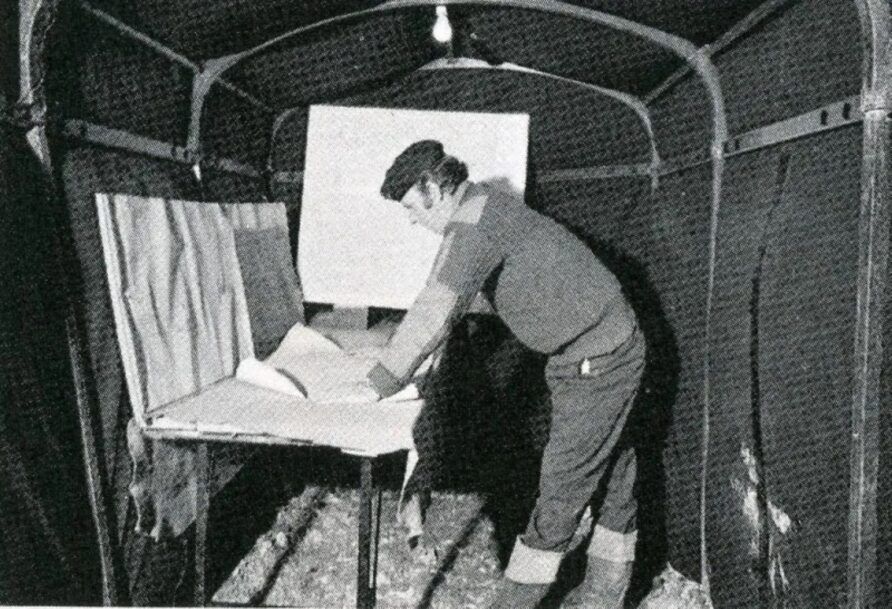
The MEXE Shelter (or hide) was a good example of a ‘build in-situ’ shelter, although it made use of a set of fabricated components.
What is a MEXE Shelter
The MEXE Shelter was used for covert observation and as a command post or Regimental aid station (in different configurations)
The main feature of its design, however, is the extreme simplicity of the equipment, requiring little skill in its construction.
Because the four components are assembled by interlocking action, requiring no additional small parts, considerable speed in erection can be achieved.
Typical Projects in Hand Report, MEXE, 1961
It was a pretty clever design, using only three frame components (pickets, spacers, and arch sections), and material outer.
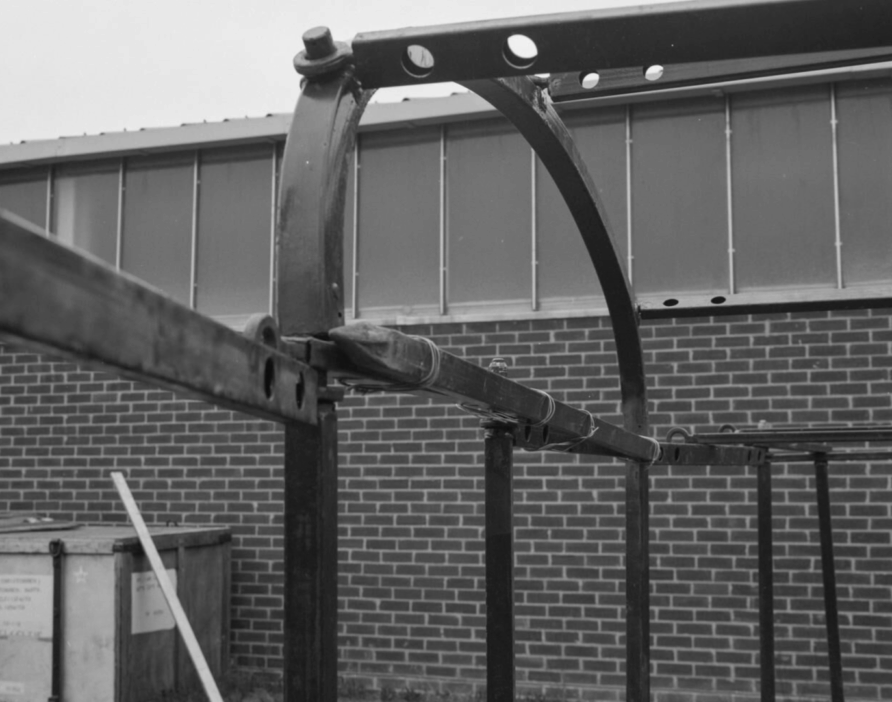
The frame components were contained in a simple canvas bag.
The build sequence was to excavate a suitable void, and build the support frame (note the false arch roof sections)
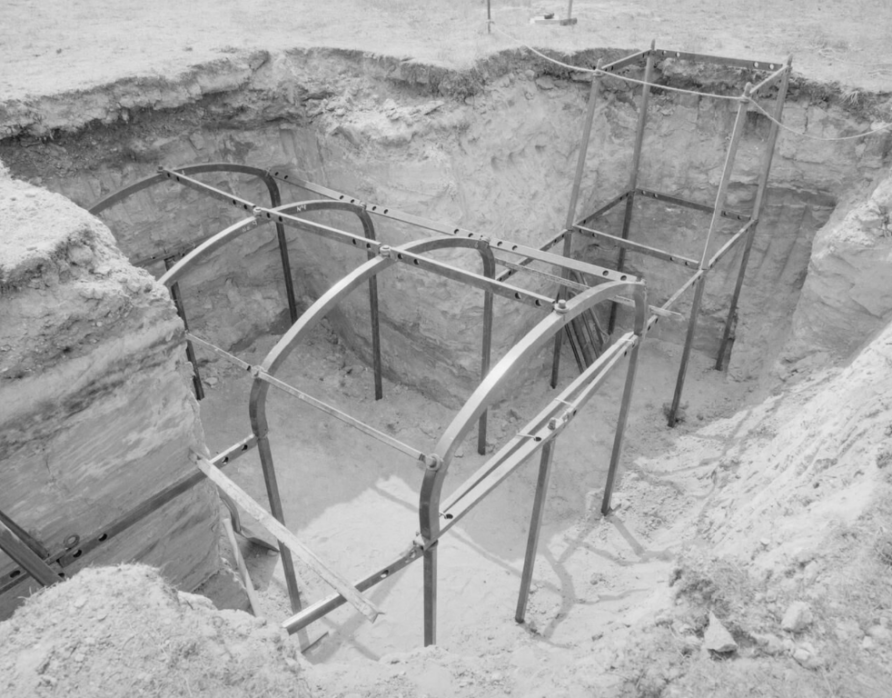
The cover material, called Flexible Revetment Material (FRM), was PVC coated woven jute, reinforced with 0.56 mm diameter galvanised steel wire. It was supplied in 9.14 m (10 yards) rolls, each 1.5m (4 ft 11 inches) wide, and weighing 32.7 kg.
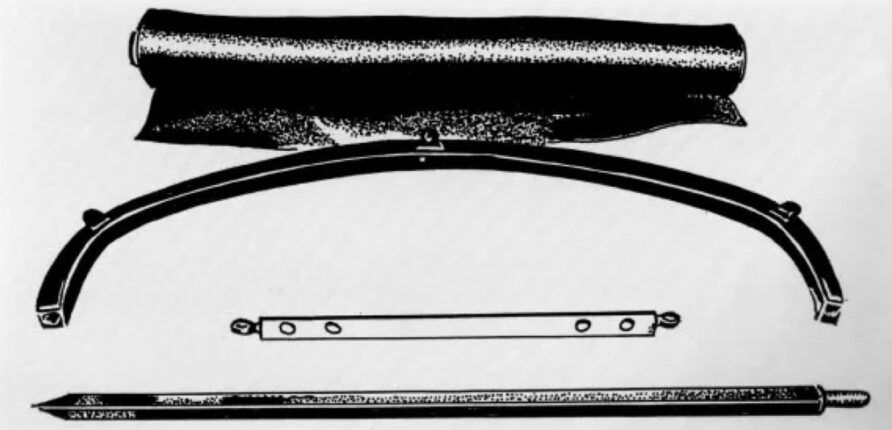
The frames were covered with FRM, overlapped by one bay and secured using wire.
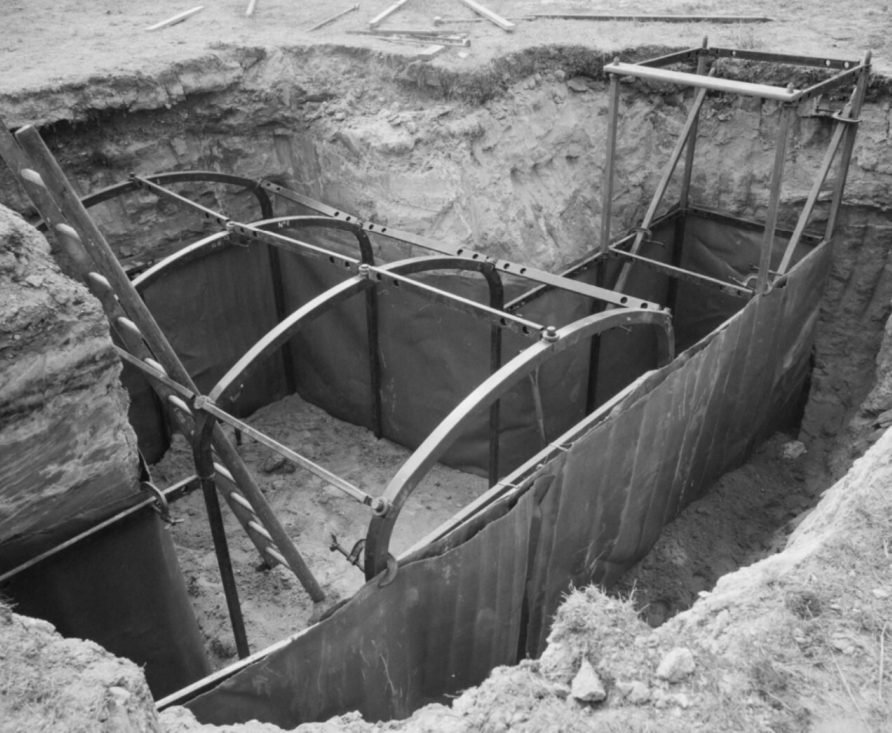
The remaining void was then backfilled using the spoil.
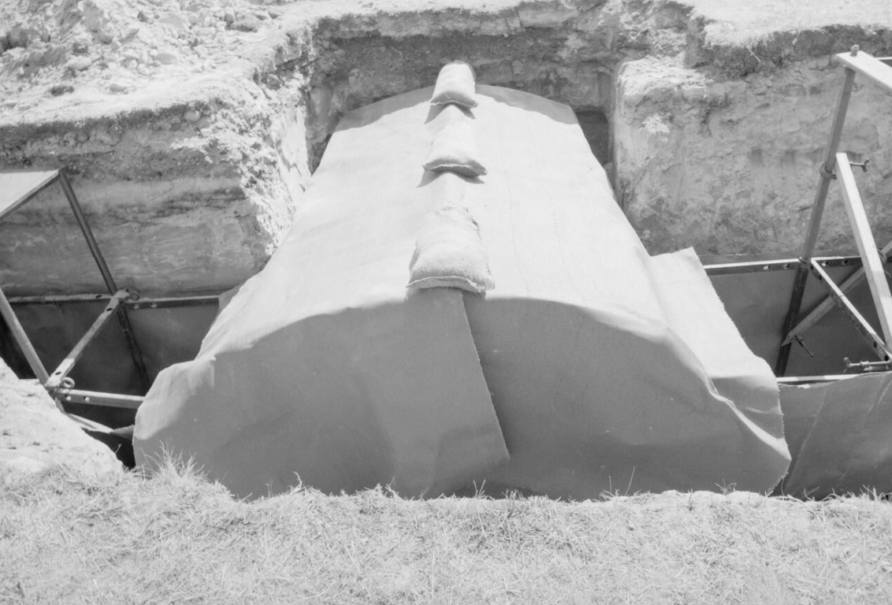
A later version replaced the FRM with a two piece cover, resulting from trials on NBC protection, and webbing straps as bay supports.
The MEXE Shelter was positively miserly, very low weight and material cost.
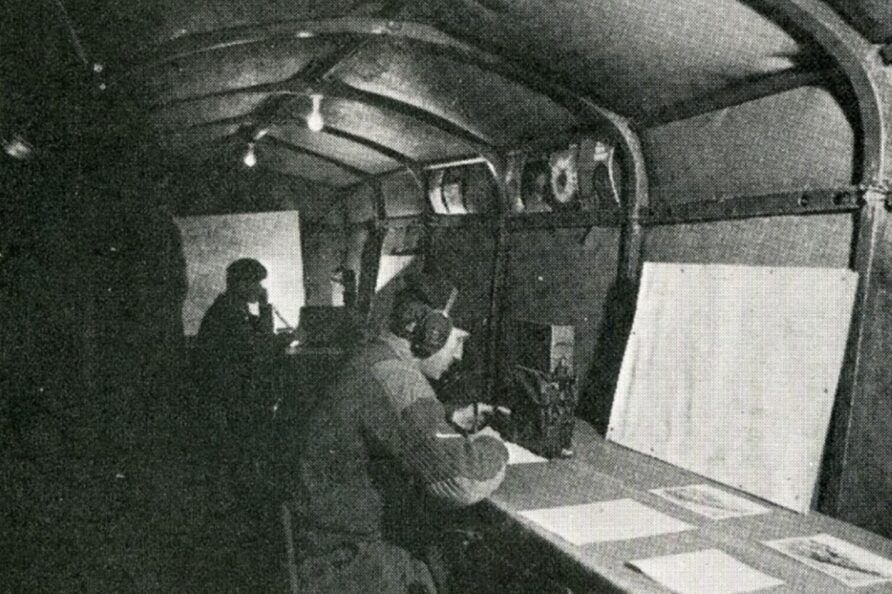
If dug by hand, though, time-consuming.
Depth of excavation was determined by use, and evolved as more focus was given to NBC protection. During original trials, the overhead cover defined to be just under half a meter. But the observation post use case required much greater depth.
The spoil could either be simply laid on top, or disposed of.
The missile trap (often used as a toilet storage area) was designed to mitigate damage from high-speed debris from nuclear explosions (not actual missiles).
In addition to the design of the structure, investigations have also been made into the geometry of the shelter layout. The high velocity winds associated with nuclear blast loading cause severe injuries to the occupants in a badly designed shelter layout, and this hazard may be increased if there is no means of trapping any wind-borne missiles.
As a result of tests initiated by MEXE recommendations have been made as to the layout of the shelters to minimise the effects of these hazards
Typical Projects in Hand Report, MEXE, 1961
Depending on use, the entrance could be a hatch with internal ladder.
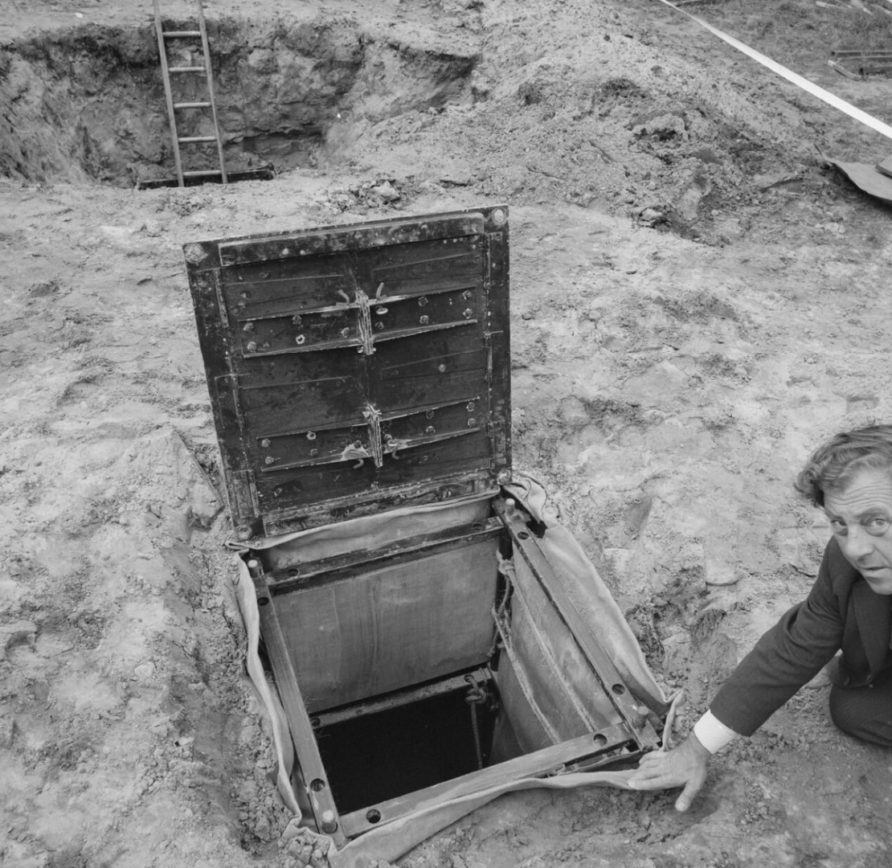
That was then concealed.
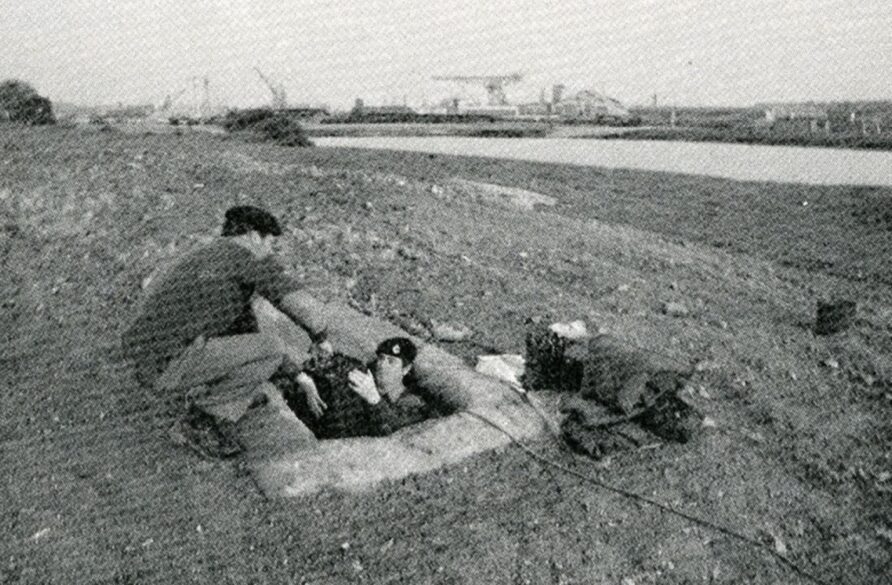
Or, when used as a Regimental Aid Station, a ramp constructed.
This would allow stretcher access for casualties.
The MEXE Shelter is no longer in service.
Other nations had equivalents, although they also seem to have fallen out of regular use.
Command Post
The standard three bay MEXE Shelter was used as a command post.
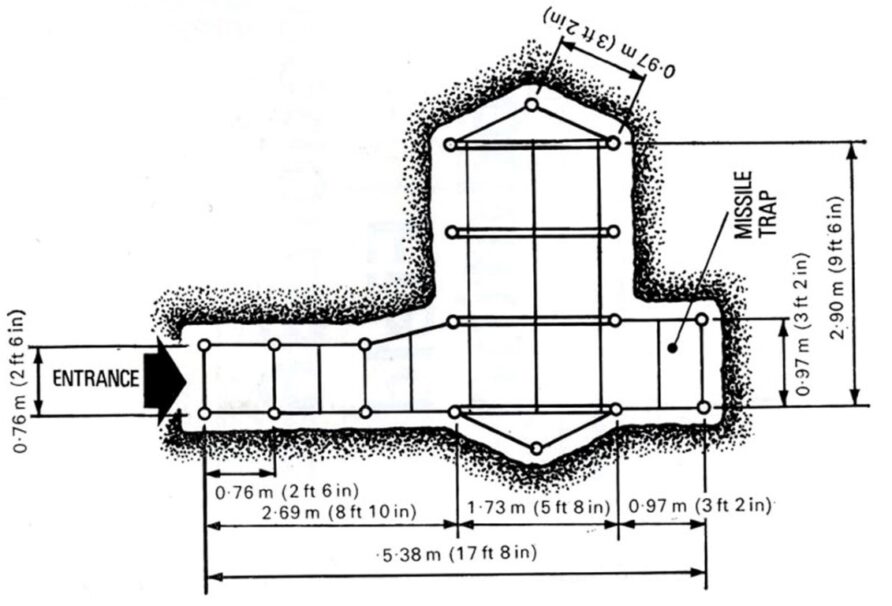
The entrance and missile trap were lower (1.35m) than the command post area.
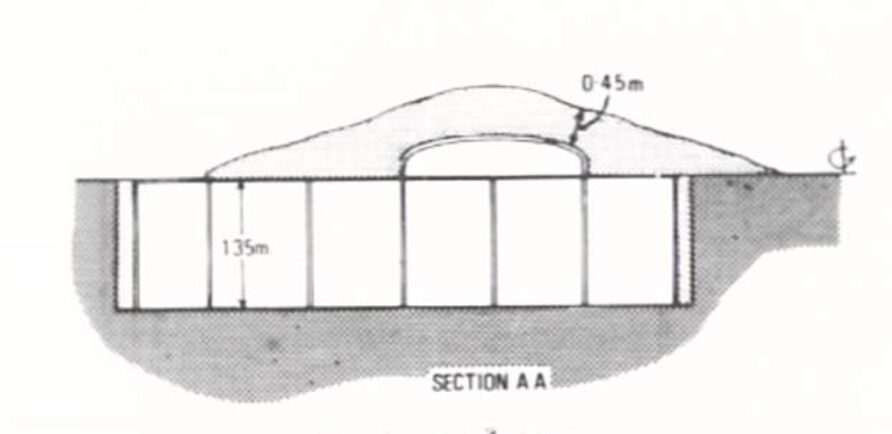
The basic command post comprised:
- FRM, 4 rolls
- Spacers, 28 (in two packs of 14)
- Pickets, 18 (in two packs of 9)
- Arch, 4
- Rope nylon assembly, 4
- Sandbags, 12
- Wire, 1 kg
The Total weight was 391.4 kg for the Mk2, and 387.9 kg for the Mk 3.
Radios and map tables were installed in the main bay, with lighting and other facilities suspended from the frame.
Regiment Aid Station
A larger, seven bay, version was configured for use as a Regiment aid station, with enough room for two stretchers and additional personnel and stores.
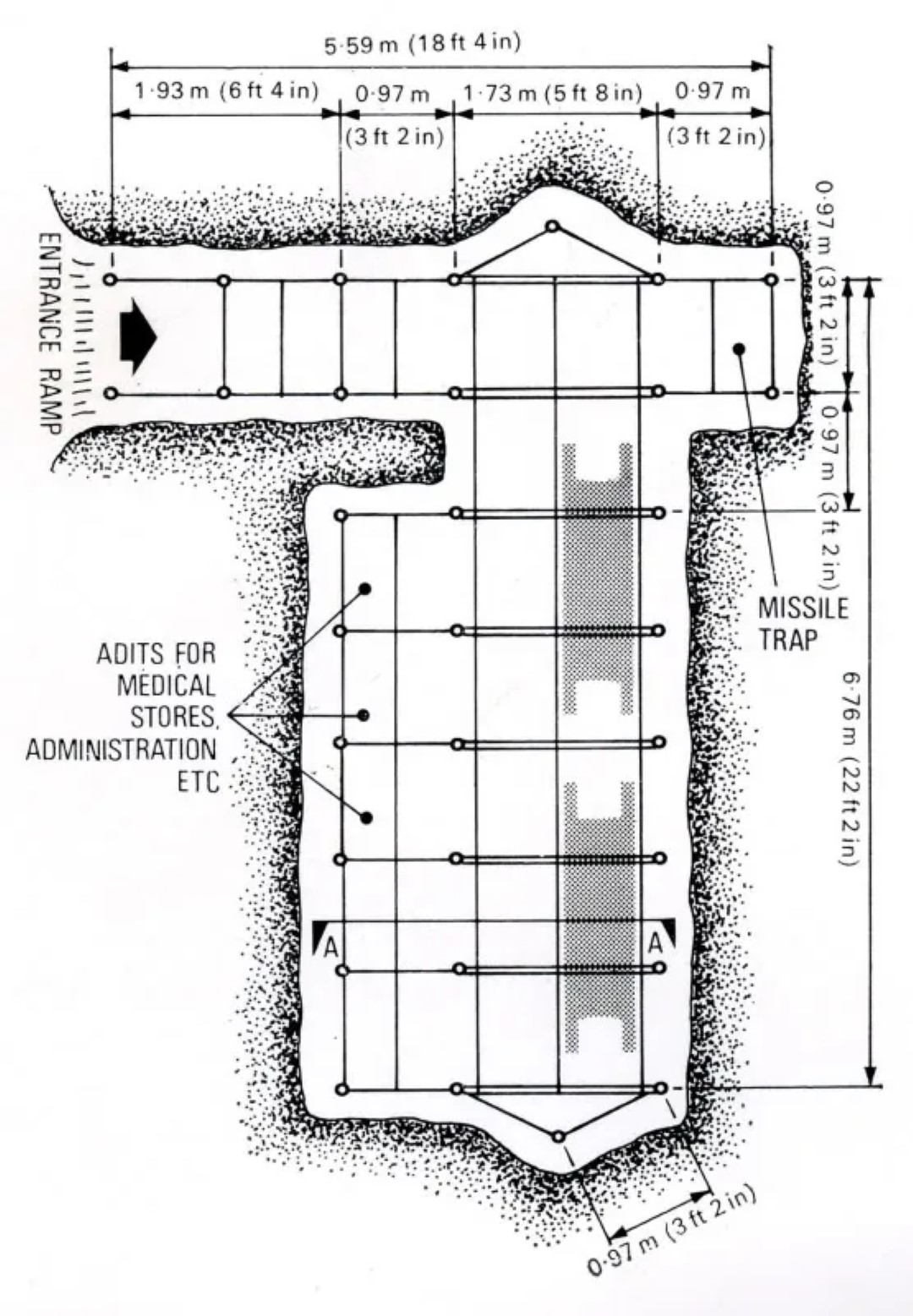
This version was less common, with a large entrance ramp providing for patient movement.
Observation Post
The Royal Artillery adopted the MEXE Shelter design for use as a covert observation hide.
My friends at the Unconventional Soldier blog has a fantastically detailed post on the Stay Behind Special Observation Post Troop, including their use of the MEXE Shelter/Hide.
With a great podcast to go with it.
Give it a read and listen, and a wider browse in the connected content at UCS, brilliant stuff.
The Special OP Troop use of the MEXE Hide evolved, latterly, to decrease excavation time by including a Powerfab 125WT tow behind excavator (although it could not excavate to the full depth of 5.5m required).
Several hand and power tools were including in the store pack to facilitate concealment and excavation, including portable petrol-powered tools such as augers and plate compactors.
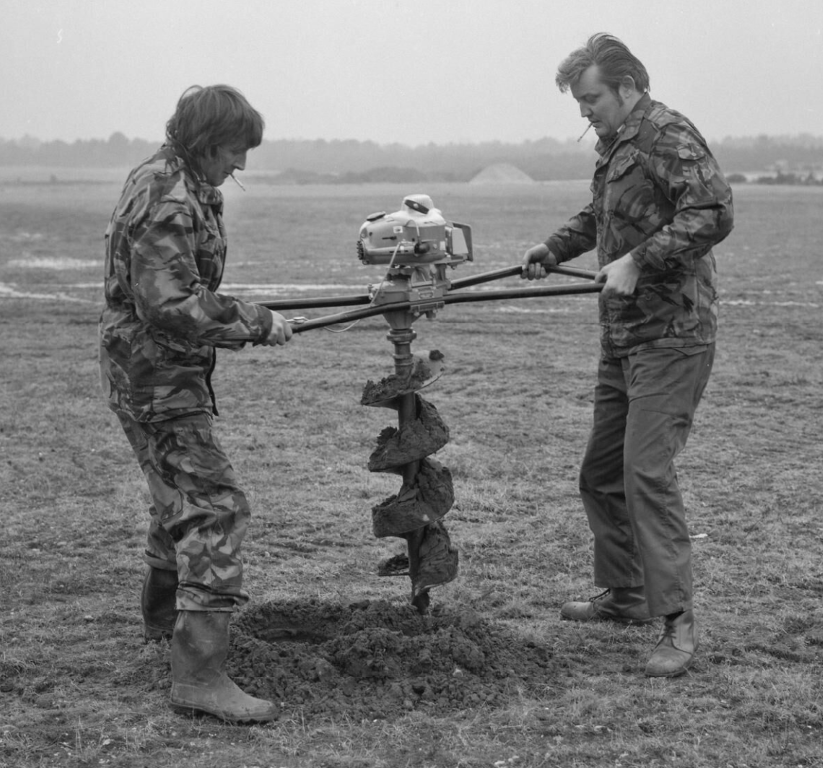
It was still a resource light capability, relying on small groups without external engineer support.
As noted by UCS, the overall weight was excessive for the transport resources (two Land Rovers), leading to many accidents.
That small group would be responsible not only for siting, excavation and concealment (within 24-48 hours), but also for ongoing operation for three weeks or more.
Operation would utilise various acoustic and visual sensors, often as part of a wider network of smaller observation hides, a modern version shown in the video below.
Eyes on Target: ‘Stay Behind Forces During the Cold War’ describes the use of the shelter during the Cold War
In the event and given time, SB units would set up secure underground hides using light, prefabricated MEXE modular shelters, or occupy pre-prepared hides and surveillance sites. MEXE Mk2 shelters consisted of pickets, spacers, and arches and PVC-coated jute fabric with a wire mesh woven in as walls as well as to hold the soil used to create the roof. Periscopes were used during the day and night-vision sights outside the shelter by four-man teams in a two men on, two men off ‘hot bunk’ system. Light Mobile Diggers would ideally be used to dig the T-shaped hides quickly.
Once overrun, the patrol would either conduct their static surveillance or leave the hide in pairs and, now behind enemy lines, move to observation points. At intervals, one of the pair would return to the shelter to be relieved by another member of the patrol. Other subsurface hides, strengthened with ‘I beams’ and aluminium landing mats able to sustain a tank rolling over, would provide security, cover, and concealment, and be situated on a vantage over a specific choke point or route of likely enemy advance close to the IGB. In one configuration, four sleeping shafts were dug. These radiated from the main observation trench and had small camouflaged ventilation shafts to the surface. Noise, communication, and light discipline was strict and a ‘candle watch’ to monitor oxygen levels was kept. Life in these shelters was extremely demanding. Emerging from one of the static hides after a few days could leave operators temporarily blinded and barely able to move
Another good link, HERE, provides an overview of detection tests during Exercise Badgers Lair.
In 1973, the non-too subtly titled Exercise Badger’s Lair was designed to test the vulnerability of hides built by 23 SAS over a period of three days on the Soltau training area in north Germany, using buried MEXE shelters.
They were tested by new techniques of airborne thermal imaging and false colour photography (using Phantom jets and helicopters), by Direction Finding of radio transmissions and by more tradition foot search teams drawn from the SAS and Parachute Regiments, some accompanied by RAF guard dogs.
The searchers were looking for evidence of ground disturbance, the erection of wire aerials in trees or vehicle movements. Despite major technological advances since WW2, the most effective tool proved to be the sensitive noses of the dogs! The dogs had no specialist training other than first being allowed to identify the site of one hide, whose location was quickly found but then the dogs became confused as to the origin of the scent.
Once the hidden SBP were ordered to open the hatch of the hide, the dogs immediately grasped the concept of the concealed target and had no further problems. In all, 33% of hides were discovered in the first 20 minutes of the search, mainly by the dogs, who could identify the location of a hide from a distance of 100m downwind, with the evidence of an aerial in the trees being the next main give-away. (TNA DEFE 48/279).
As a consequence, improved ventilation systems were introduced.
These improved ventilation systems also include atmosphere monitors and better power management equipment.
The MEXE hide was used by various stay behind groups.
Before reading on, would you mind if I brought this to your attention?
Think Defence is a hobby, a serious hobby, but a hobby nonetheless.
I want to avoid charging for content, but hosting fees, software subscriptions and other services add up, so to help me keep the show on the road, I ask that you support the site in any way you can. It is hugely appreciated.
Advertising
You might see Google adverts depending on where you are on the site, please click one if it interests you. I know they can be annoying, but they are the one thing that returns the most.
Make a Donation
Donations can be made at a third-party site called Ko_fi.

Think Defence Merch
Everything from a Brimstone sticker to a Bailey Bridge duvet cover, pop over to the Think Defence Merchandise Store at Red Bubble.
Some might be marked as ‘mature content’ because it is a firearm!
Affiliate Links
Amazon and the occasional product link might appear in the content, you know the drill, I get a small cut if you go on to make a purchase
Do We Need a Modern Day MEXE Shelter
The image below shows the interior of a Germany Army Boxer command variant.
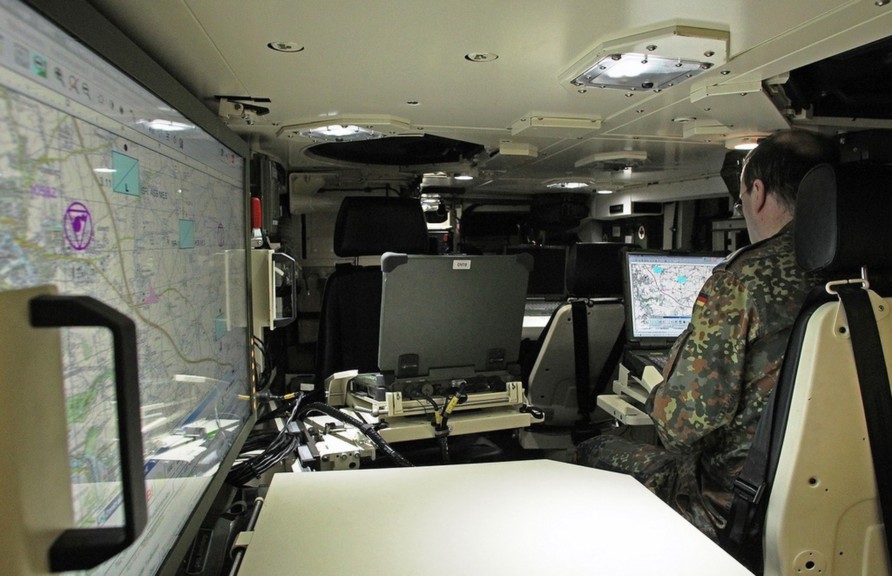
As Boxer enters service with the British Army, alongside Ajax (Athena), one might argue that command vehicles are a better environment than a static, buried shelter, and the same for medical facilities.
As covered in this post, for surveillance, we might be better served by Unattended Ground Sensors (UGS) rather than crewed observation hides, although I suspect a mix of both would be the optimal solution.

For medical support, again, one might argue that the initial casualty treatment might happen in the very well-equipped Boxer ambulance.
For each of the three main use cases for the MEXE Shelter, once could make a reasonable case that there are other options.
But.
Not everyone will have access to Boxer or other similar vehicles, and the relatively low cost of a modern MEXE Shelter might make a reasonable complementary capability.
Options for a Modern Day MEXE Shelter
One of the main requirements for the original MEXE Shelter was that it should be possible to build by hand, even though this would be a challenge.
It was also designed to be flexible enough to create different types of shelters using a common kit of components.
Ease of transport was also a major requirement.
I will look at alternative options for other below ground shelters in a future post, but assuming a modern day MEXE Shelter is similar to an older one in dimensions and general design, there are options available.
There is no reason a modern MEXE Shelter could not be remade today, it was a simple system of a handful of easily manufactured components.
Key Requirements
The key requirements for a Modern Day MEXE Shelter are:
- No component should be larger than 2m (preferably 1.8m) such that they can be transported
- No component should require mechanical handling equipment, i.e. built by hand
- The system should be able to used for different designs
Given the likely quantities, though, it might make more sense to look at frame systems and materials in civilian use, and adapt them, rather than contracting for a bespoke system.
There are three main components, frame, revetment materials, and accessory items like doors and steps.
Construction Options — Long Span Industrial Shelving
This is surprisingly strong, readily available, and quite cheap.
They are often used for pallet racks.
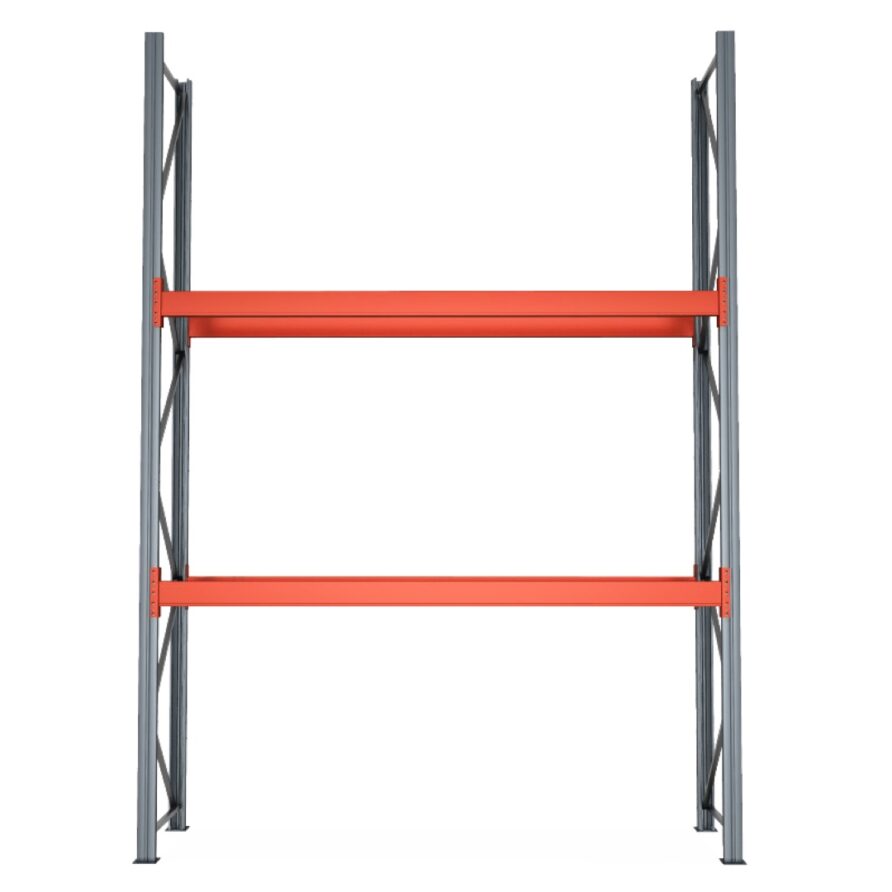
Multiple bays can be clipped together to make longer structures.
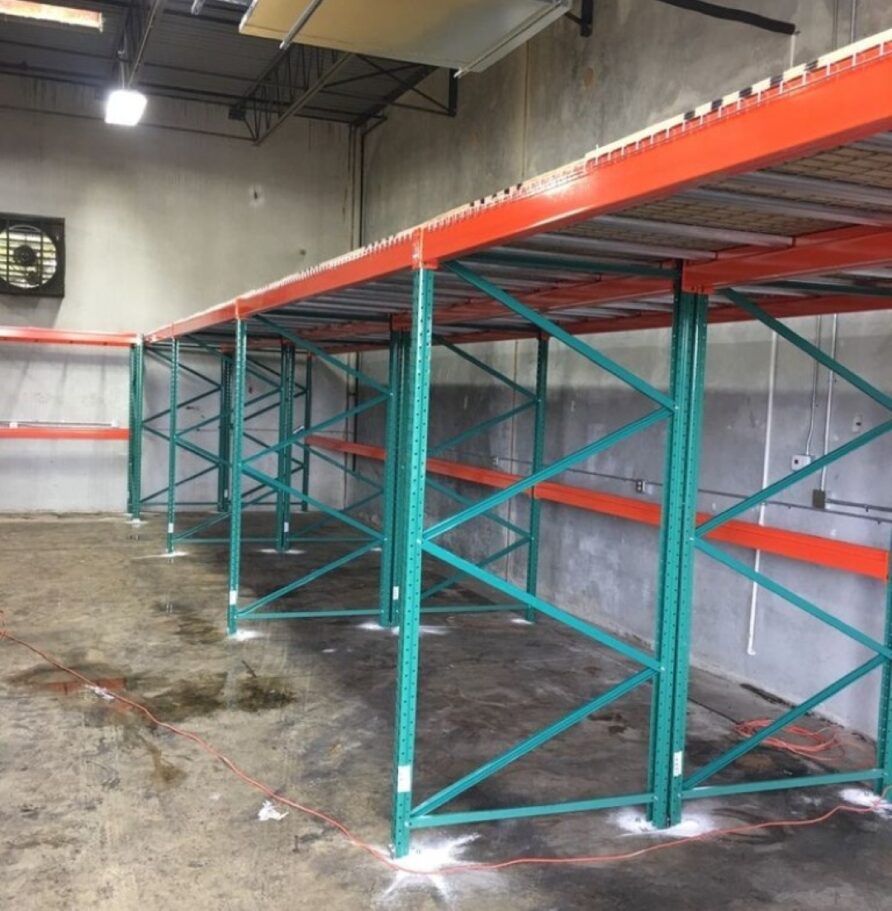
This system would be quick to install, components simply clicking together.
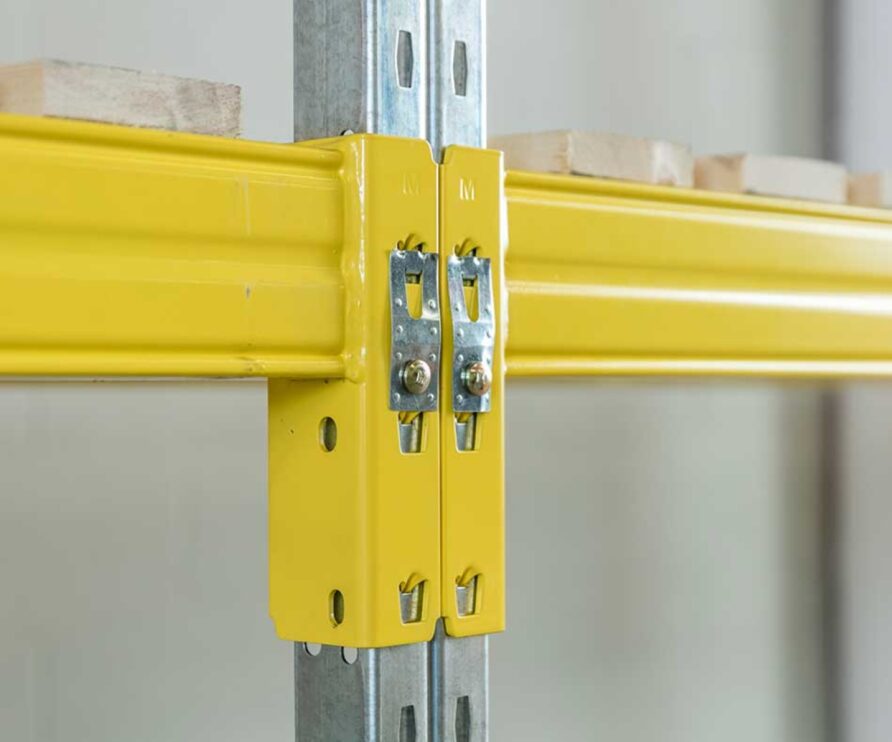
The pallet supports would be placed at the top and bottom of the frame module to form a strong frame.
Clip on mesh panels that would be used for a geotextile or sheet material, or when used at floor level, left clear to provide a raised floor
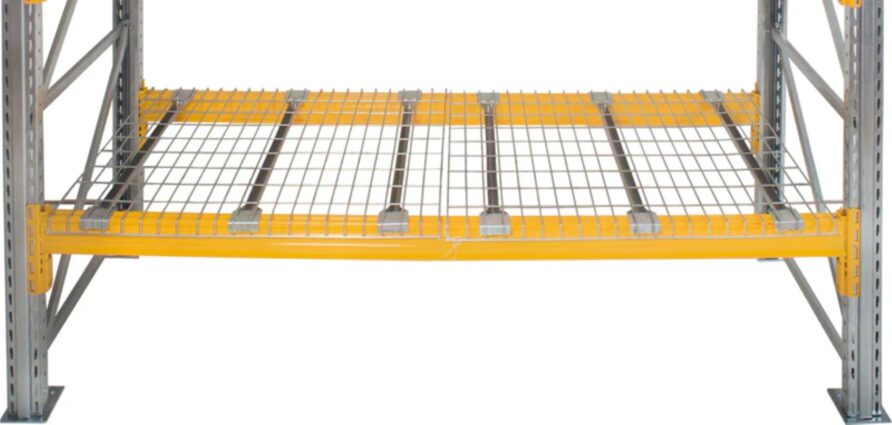
None of these components are longer than 2m, and if greater height were needed, the end posts can be linked with a joining fixture.
Construction Options — Interlocking Concrete Panels
Concrete interlocking panels can be used to create walls.
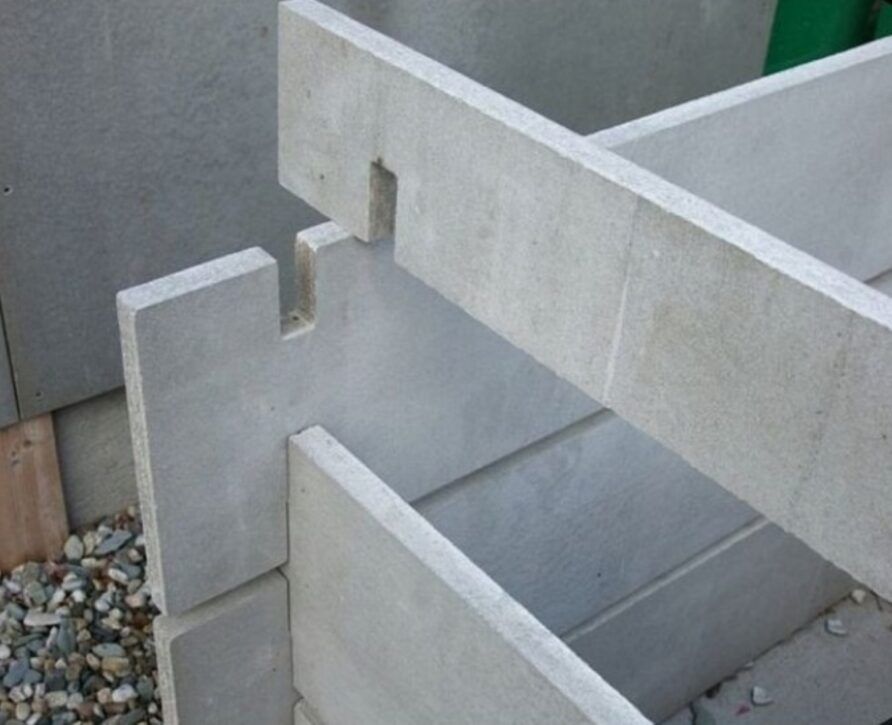
These would be difficult to manually handle, although not impossible.
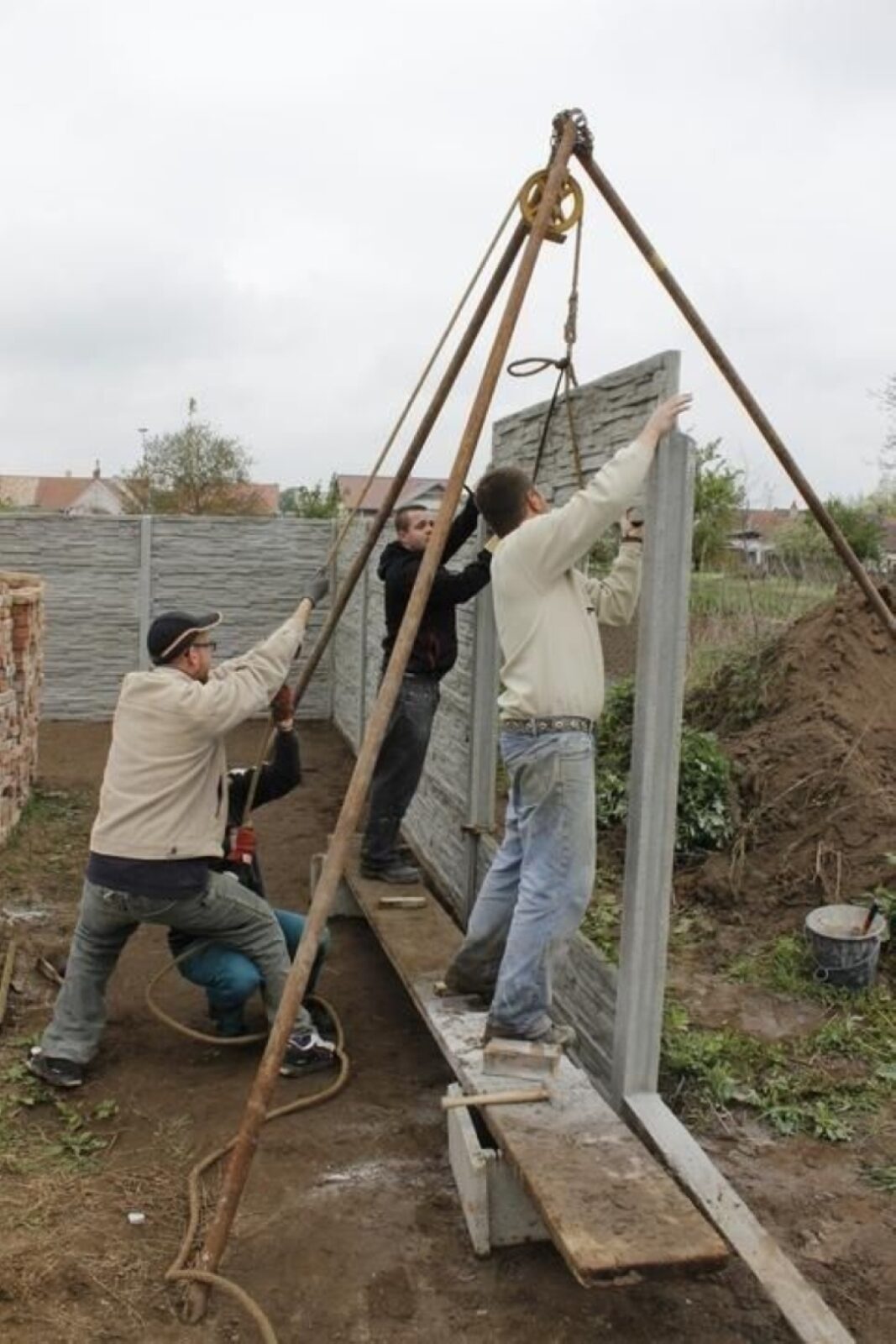
The same system could be used for both wall and roof construction, although some sort of post would be needed to enable any construction longer than a couple of metres.
Construction Systems — Utility Chambers
Gas, water, electricity, and telecommunications utility installers face some of the same issues as soldiers when getting underground, so providers have responded with various modular solutions.
Cubis Systems in the UK, with their Stakkabox system, for example.
STAKKAbox™ ULTIMA Connect chamber system features twin wall sectional parts that are manufactured from GRP in 150mm-deep sections that come in corner pieces (‘hockey sticks’) and straight lengths that stack one on top of the other and are connected together using jointing pegs to reach the desired depth. Each ring section is castellated to positively interlock with the ring sections above and below. It’s adjustability to customers’ requirements, regarding size, lead time, and installation environments, makes it the ideal solution for a range of installations and environments.
The individual sections come in different sizes, but all use the same construction.
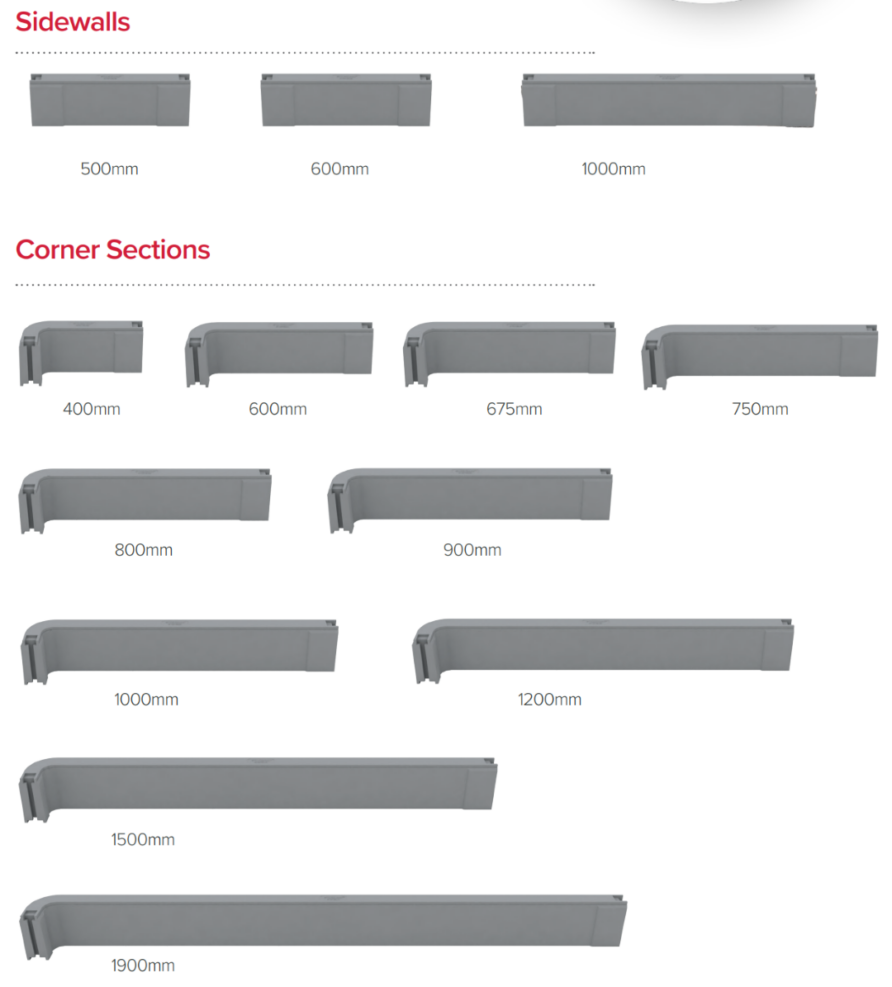
Installation sequence is shown in the video below.
The components are easily palletised and are light enough to be handled by a single soldier.
Larger span chambers can be built, but these would require internal supports for the roof if the 2m maximum length required was applied.
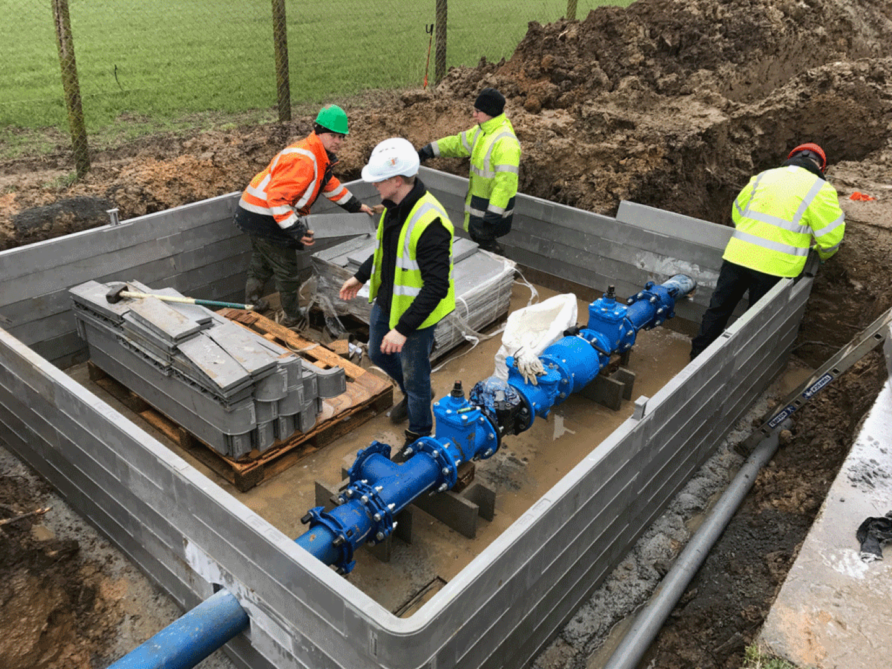
Internal strengthening frames can be used if side forces require them, and to provide support to the covers (or roof)
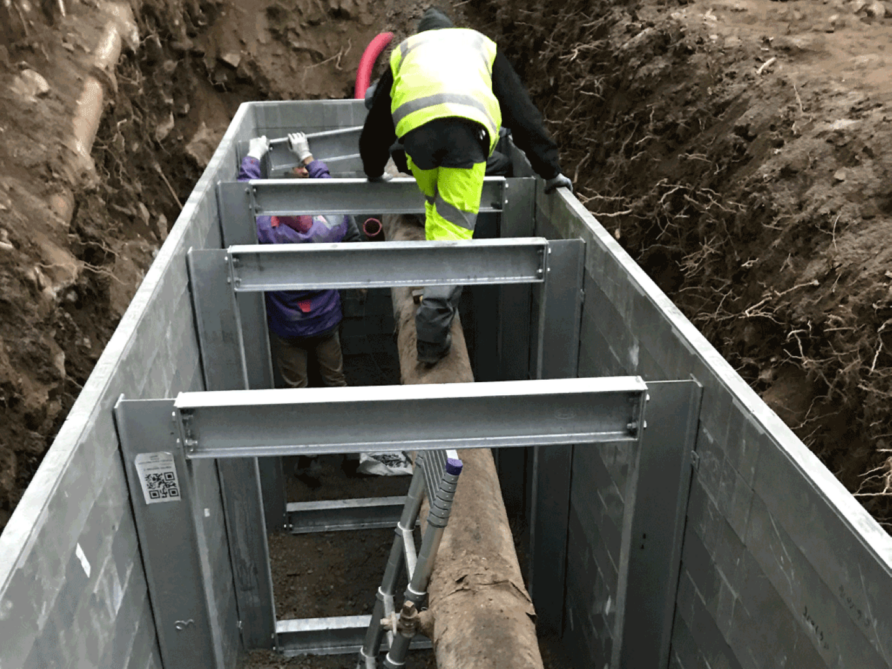
Different cover types complete the system, of various strength ratings.
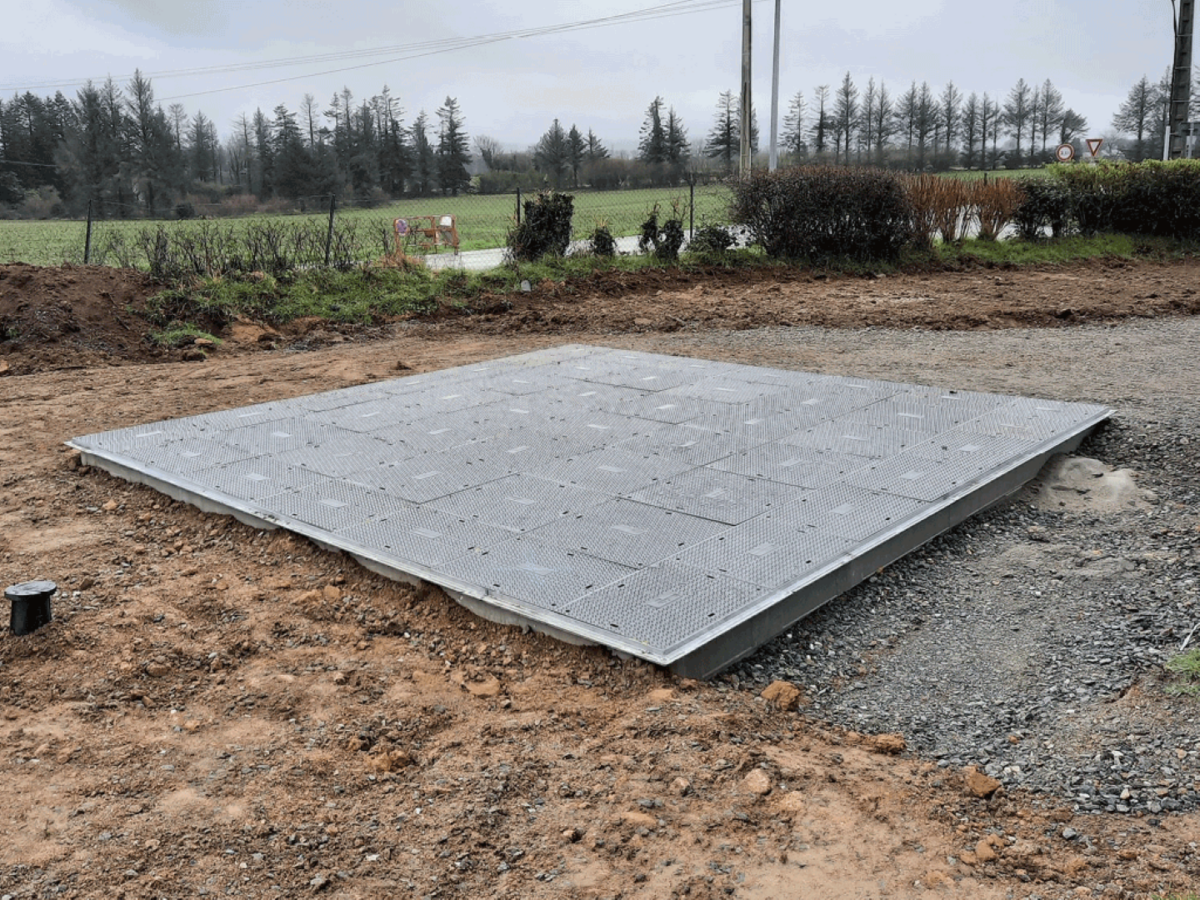
This is a very capable system, and can be built quickly by hand, although it could also be pre-fabricated and transported to site as a complete unit.
Construction Options — Frame Systems and Outer Coverings
Like pallet racking, steel or aluminium frame systems are widely available.
Although there are many proprietary frame connector systems, the three I will consider below are commonly available, all easily cut with hand/power tools, strong, and space efficient in transport.
Unistrut
Atkore Unistrut is the brand name for a non-weld construction channel, available in pre-galvanised, galvanised, powder-coated and stainless steel (non-branded versions are available)
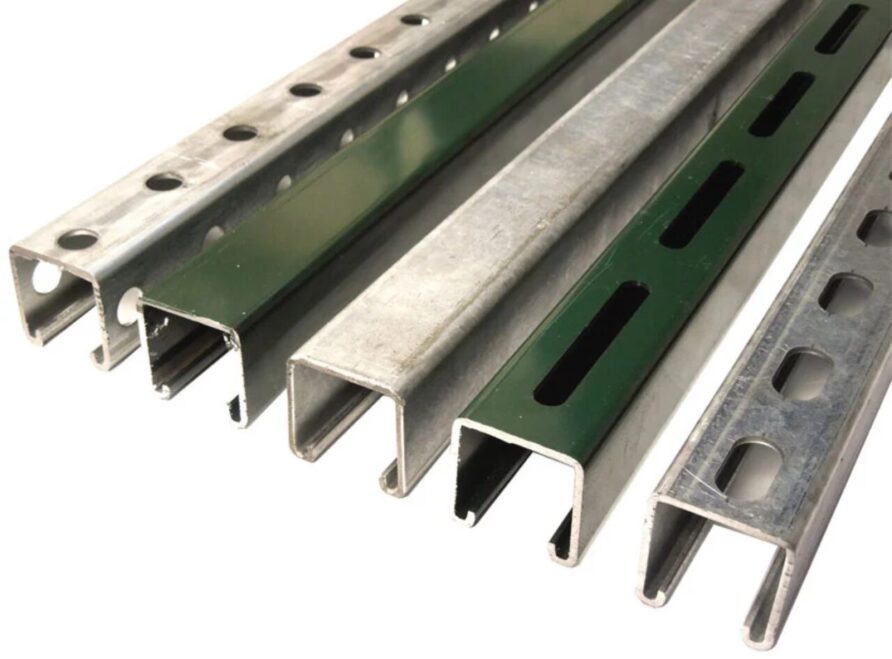
Single or double, non-slotted, double or triple slotted, it is a widely used and globally available system.
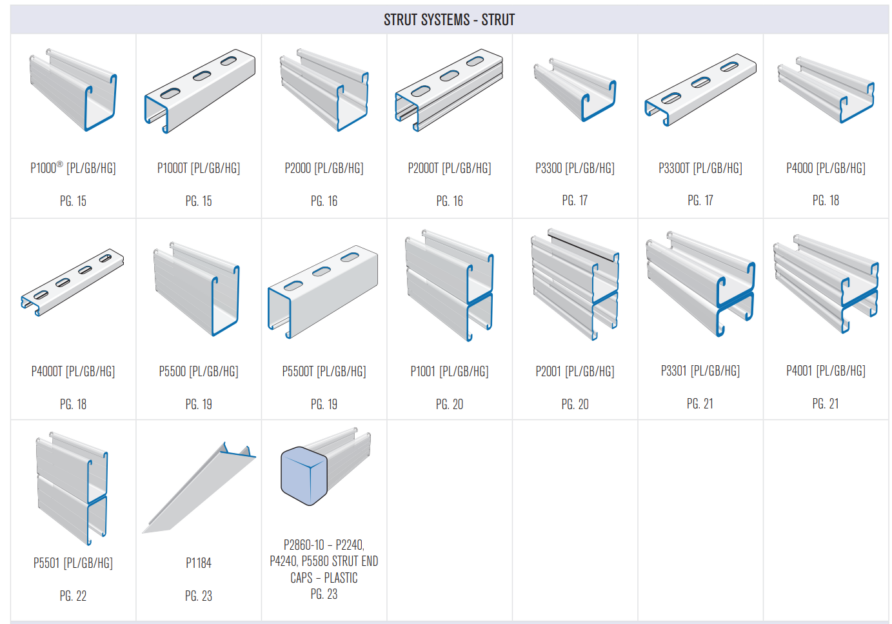
Unistrut is cheap and robust, although not particularly low weight; 2.73 kg/m for 41 mm deep slotted galvanised.
Connectors and fixings are available that allow simple bolt-together shapes to be formed.
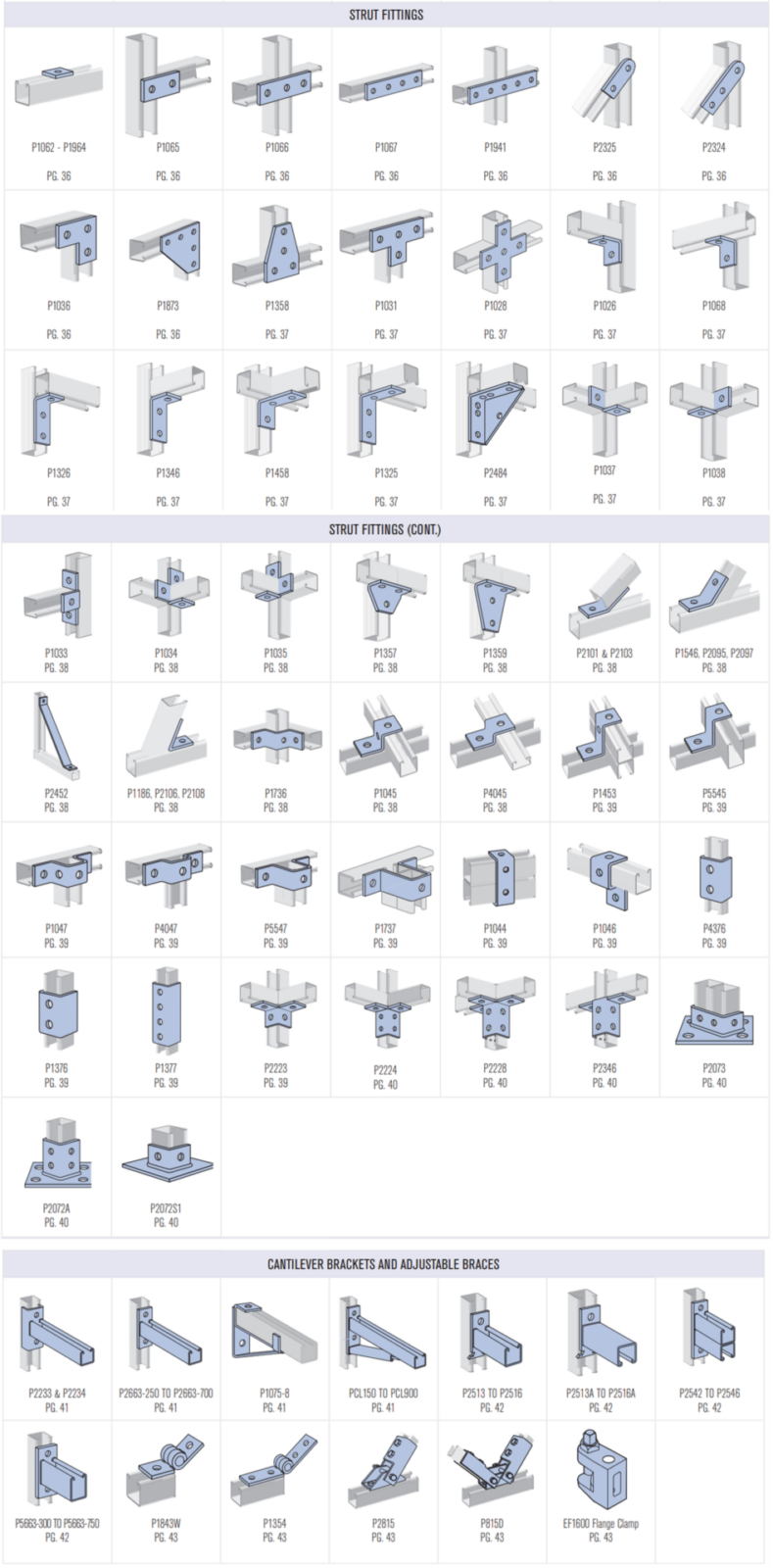
A spring nut (zeb) can be used to secure connectors and fixtures (tables, storage shelves, bed spaces, and electrical equipment) at any length on the channel, horizontal or vertical.
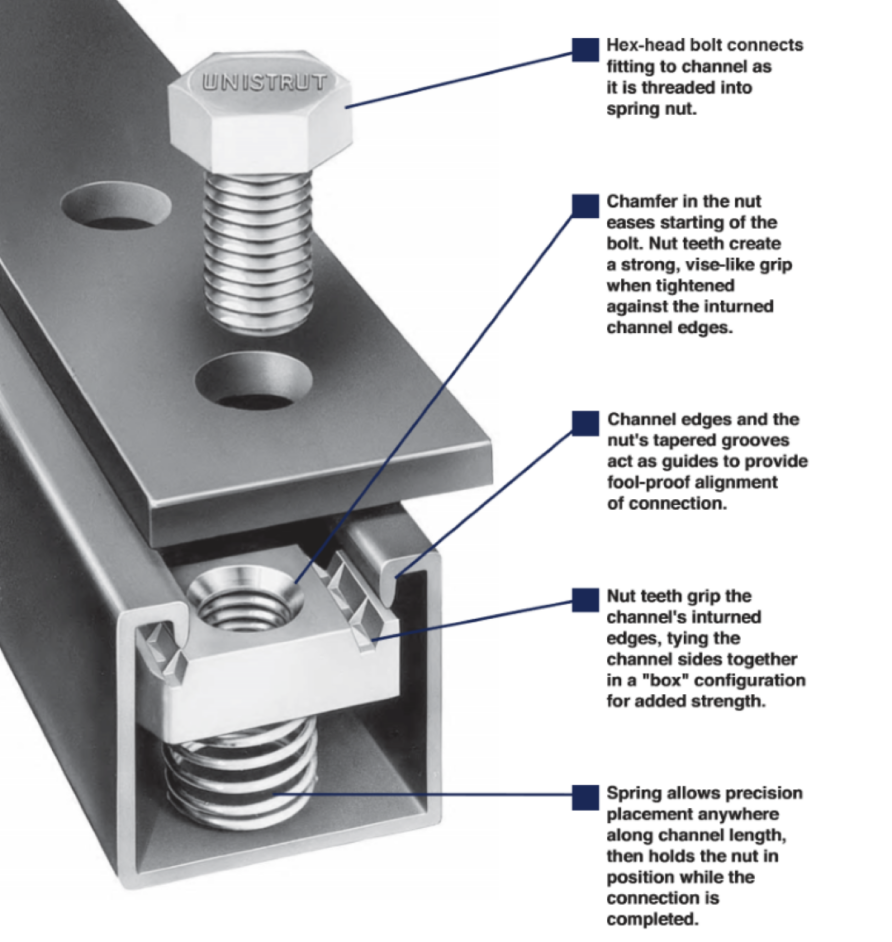
Unistrut is not available in curved sections to improve strength, but the double channels can be used as an I Beam when placed on their side.
In addition to the standard fittings, third-party accessories can be used for suspending internal fixtures such as lights, bed frames, and tables.
Kee Klamp
Round tube and connector systems, like Kee Klamp, are used for outdoor safety and guard rails, pedestrian barriers, gates, and ramps.
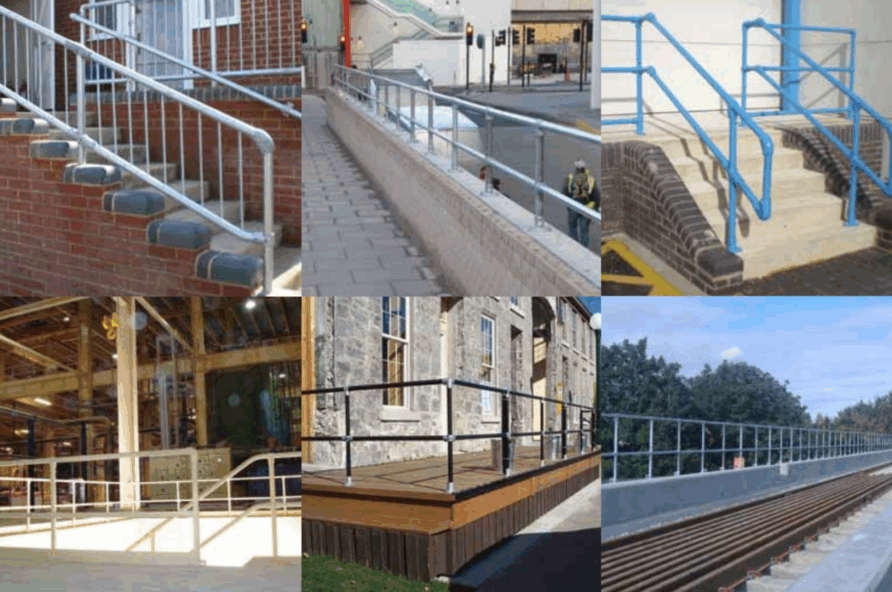
Tubes are available in galvanised steel, powder-coated steel or aluminium, and in seven size variations, from 17.5 mm to 60.3 mm.
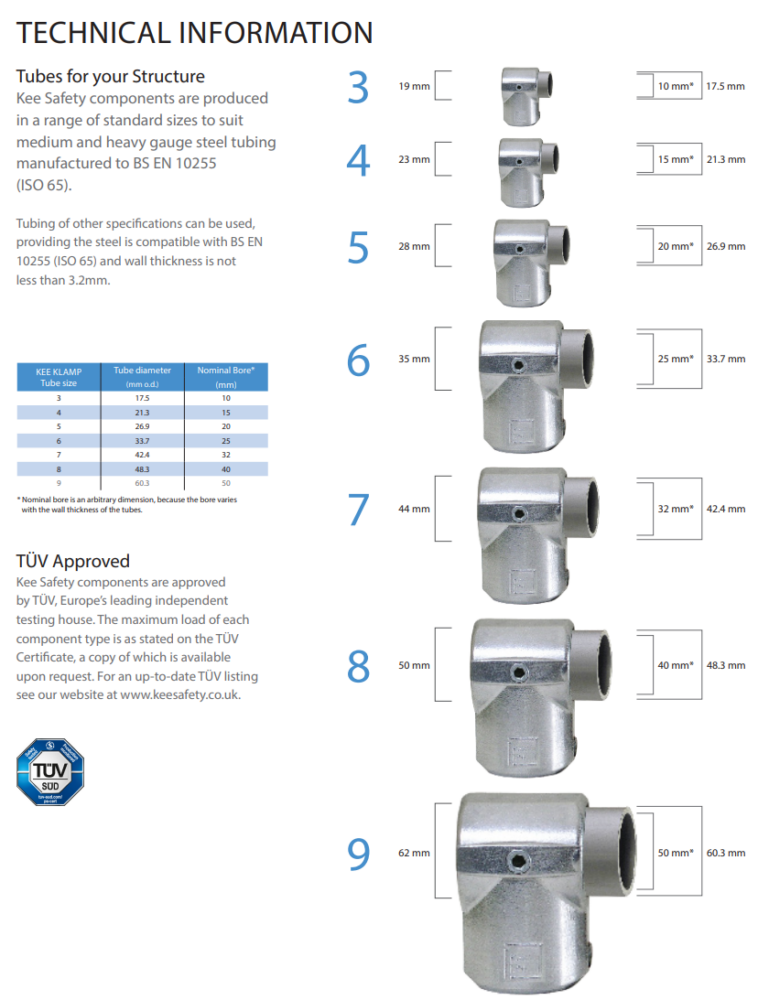
Tubes are connected using pre-formed connection elements that are secured using a hex set screw, each with an axial load of 900 kg when torqued correctly, a selection shown below.
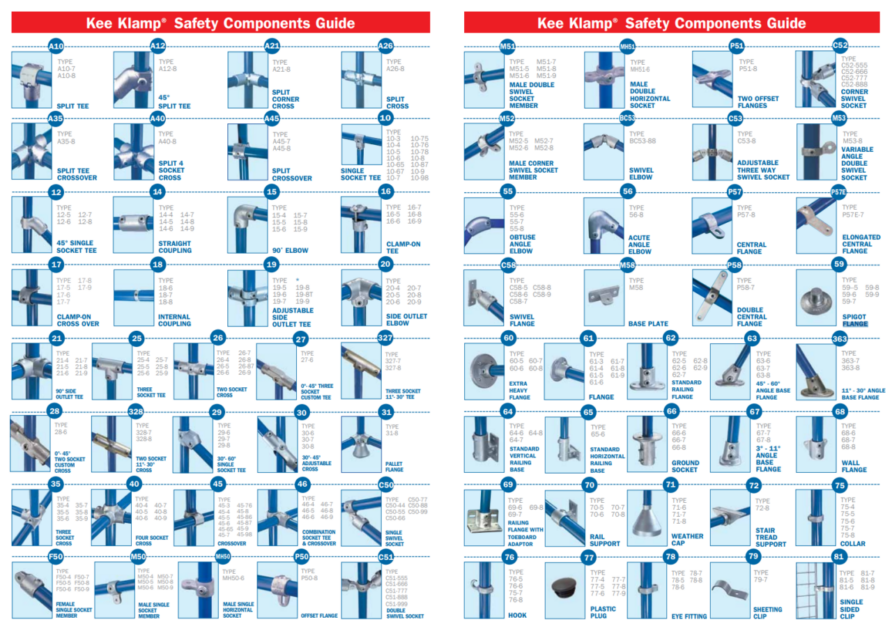
As with Unistrut, the wide range of fittings can be used to create simple shapes and to attach accessories and internal fixtures.
Cuplok and System Scaffold
We already make use of the Lyndon/SGB Cuplok scaffold system, and have done for decades.
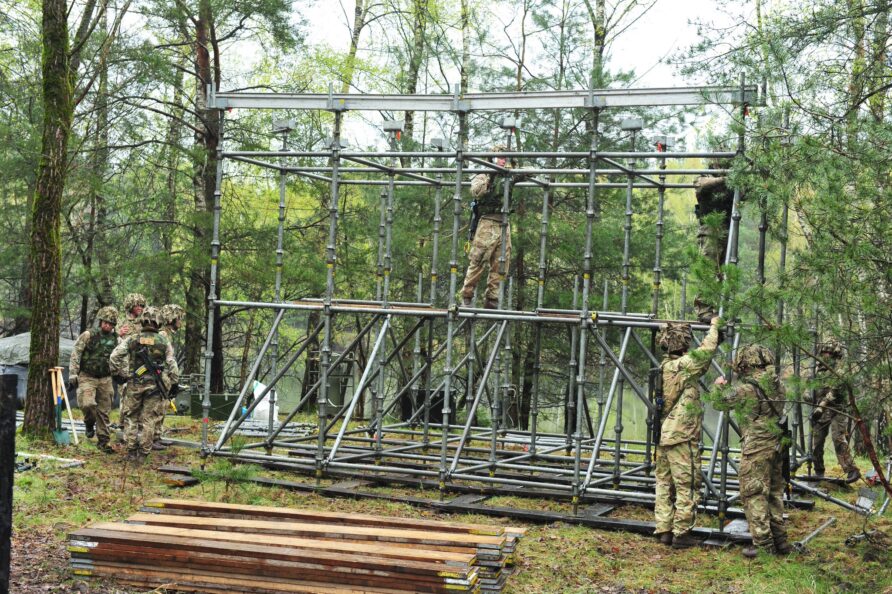
It was introduced (after trials as a bridge support) as a quick build tower for water storage, and was latterly adapted for use in Afghanistan as the Expeditionary Elevated Sangar.
Cuplok uses galvanised components and the cup and blade interlocking system.
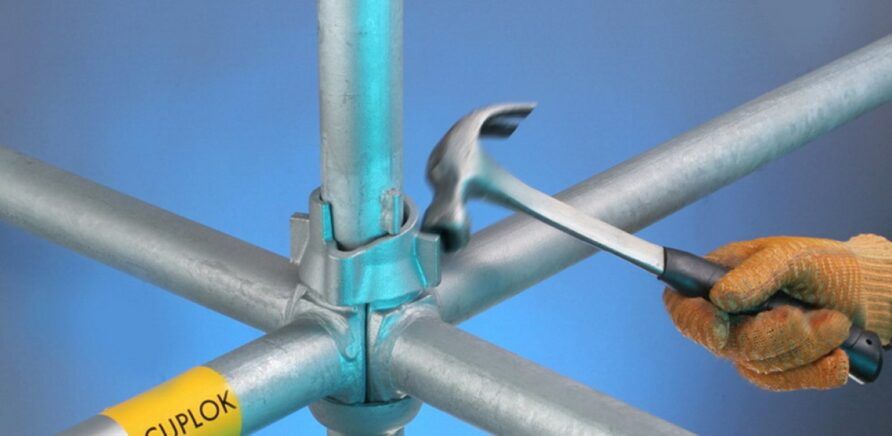
When buried, the cross braces would not be needed, so clear spaces could be created that would not impede movement.
Verticals are available in 1m, 2m, and 3m lengths, with each slotting into each other.
Ledgers and transoms (horizontals) are available up to 3m long, with prefabricated decking components
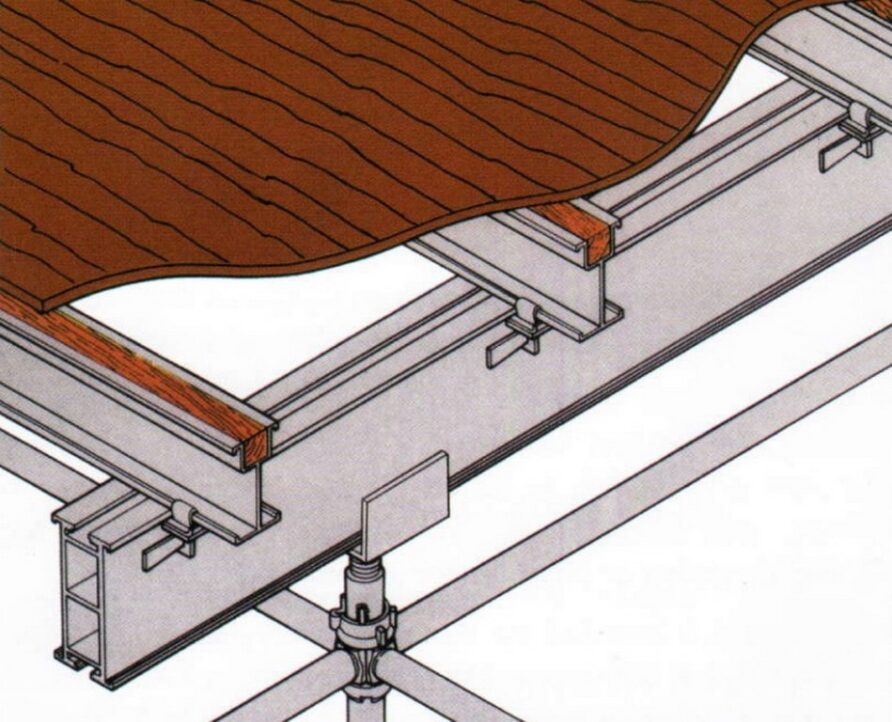
Cuplok is robust, easy to use, and perhaps more importantly, already in the supply chain.
Ringlock and other system scaffold systems provide another option (more on these later in the series).
Tubes could be used for the roof system, but stronger beams are a better option to reduce the amount of material used.
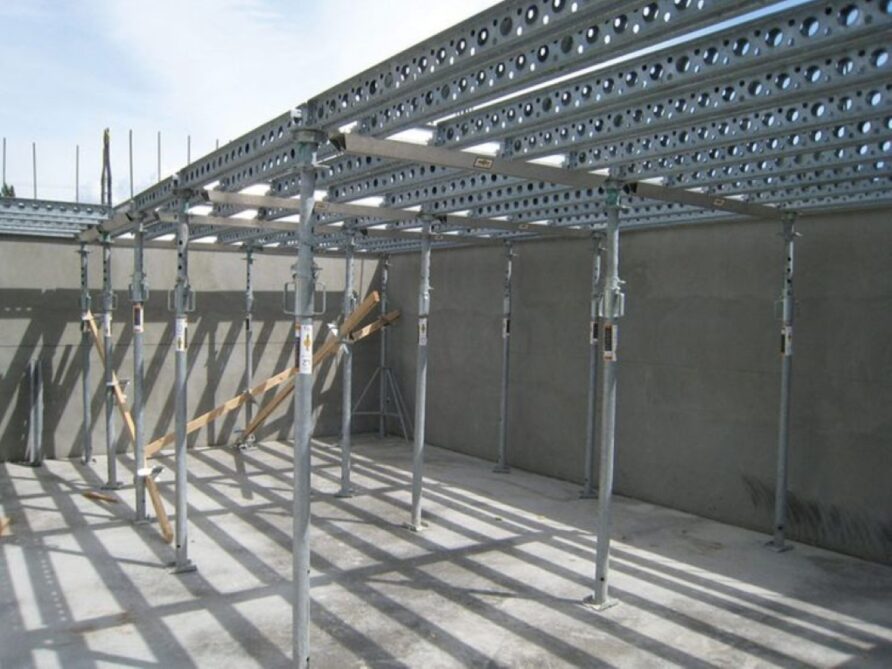
Revetment and Waterproofing
With a basic, but strong, frame built, the next job would be to revet and install a waterproof skin.
The original MEXE shelter used a steel wire reinforced canvas material as revetment, the FRM was perhaps one of the weakest components.
Bulging reduced available space (hard dug space) and it was not safe unless extensively secured.
Textile material technology has moved on considerably since, modern artificial woven materials can be robust and almost stretch free, steel reinforcing might not be needed.
THS Industrial Textiles in the UK makes a range of suitable materials, both with and without metal reinforcement. Some of their products have a very high heat resistance as well, and they can be dipped or laminated to improve water resistance.
Permeable vapour barriers and geotextiles are also potential flexible materials, especially if combined.
For example, a Tensar Triaxial geogrid or Cellular Foundation Mattress System
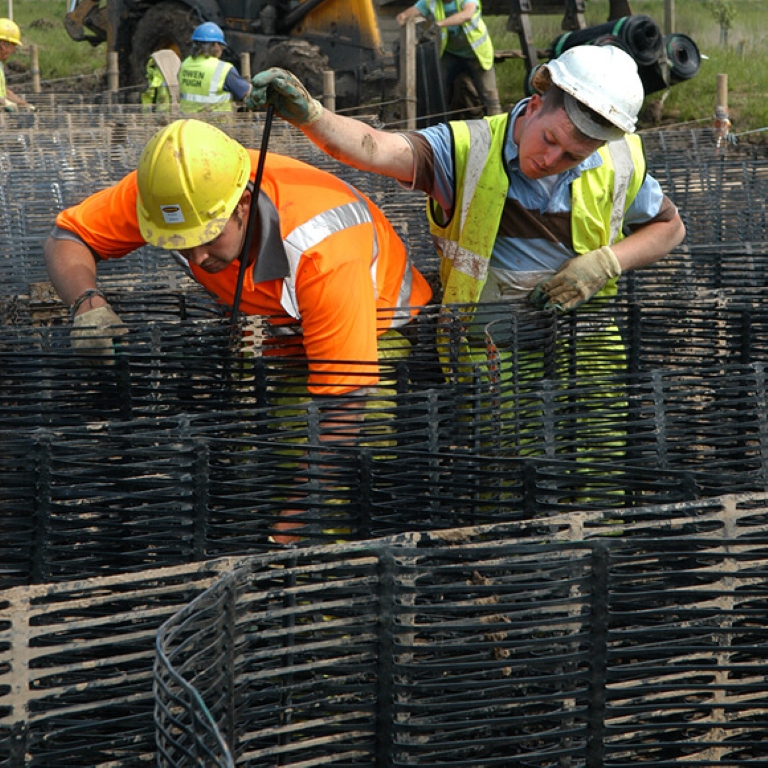
This would be used with breathable or non-breathable membrane products to produce a waterproof outer.
An alternative to flexible revetment material is sheet material.
The most obvious is corrugated galvanised steel, when placed over the steel framework it would provide a high strength and water-resistant barrier, able to support significant overhead and side loads.
Cheap and easy to obtain.
Water-resistant MDF and marine plywood are other options, although more costly.
Using a cheaper material like OSB, combined with a geotextile membrane, should also be possible.
Combing strength and water resistance, Stokbord is a proprietary product that uses recycled plastic, available in different thicknesses and finishes.
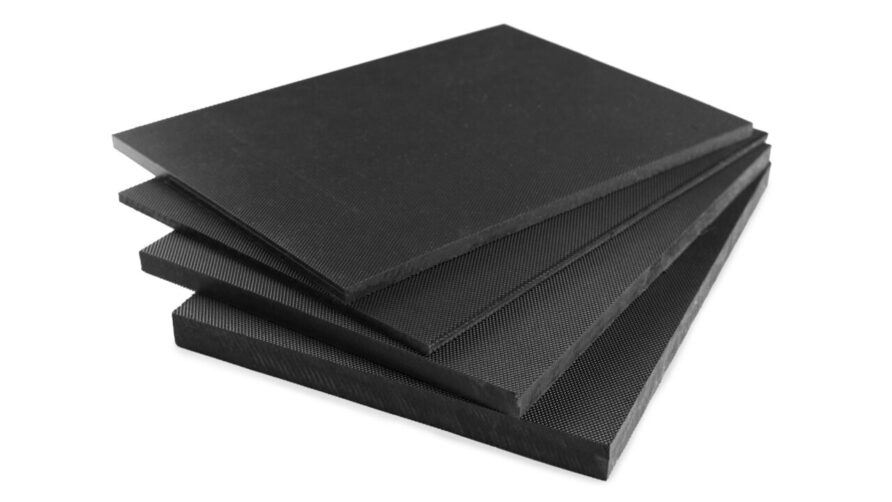
When used over a suitable frame, Stokbord is a versatile product, and can be endlessly re-used.
Stokbord could also be used as a more complete prefabricated solution, if one imagines a ready-made steel frame, with Stokbord already affixed, although these would still need to be in smaller panels to satisfy the transportability requirement.
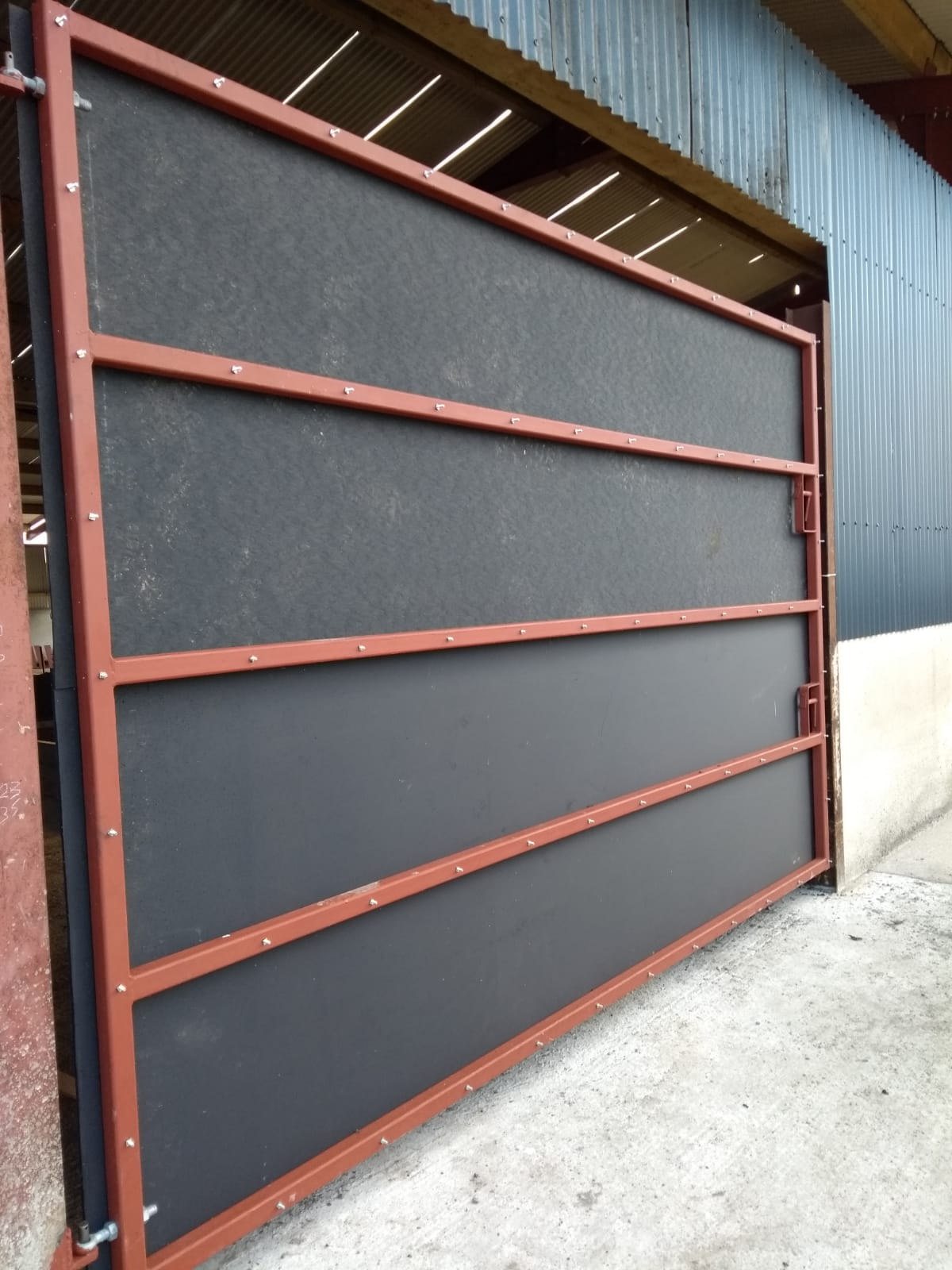
A panel like in the image above might need to be built stronger, but together with a permeable waterproof membrane, would definitely worth investigating, although it would not be as transportable as the separate frame and revetment options described above.
Scaffold boards and nailing plates, when combined with a membrane outer, might also provide sufficient revetment when used over the frame systems.
Doors, Steps, and Hatches
If a vertical access shaft were used, again, using the same construction techniques as above, the easiest option would be a telescopic ladder.
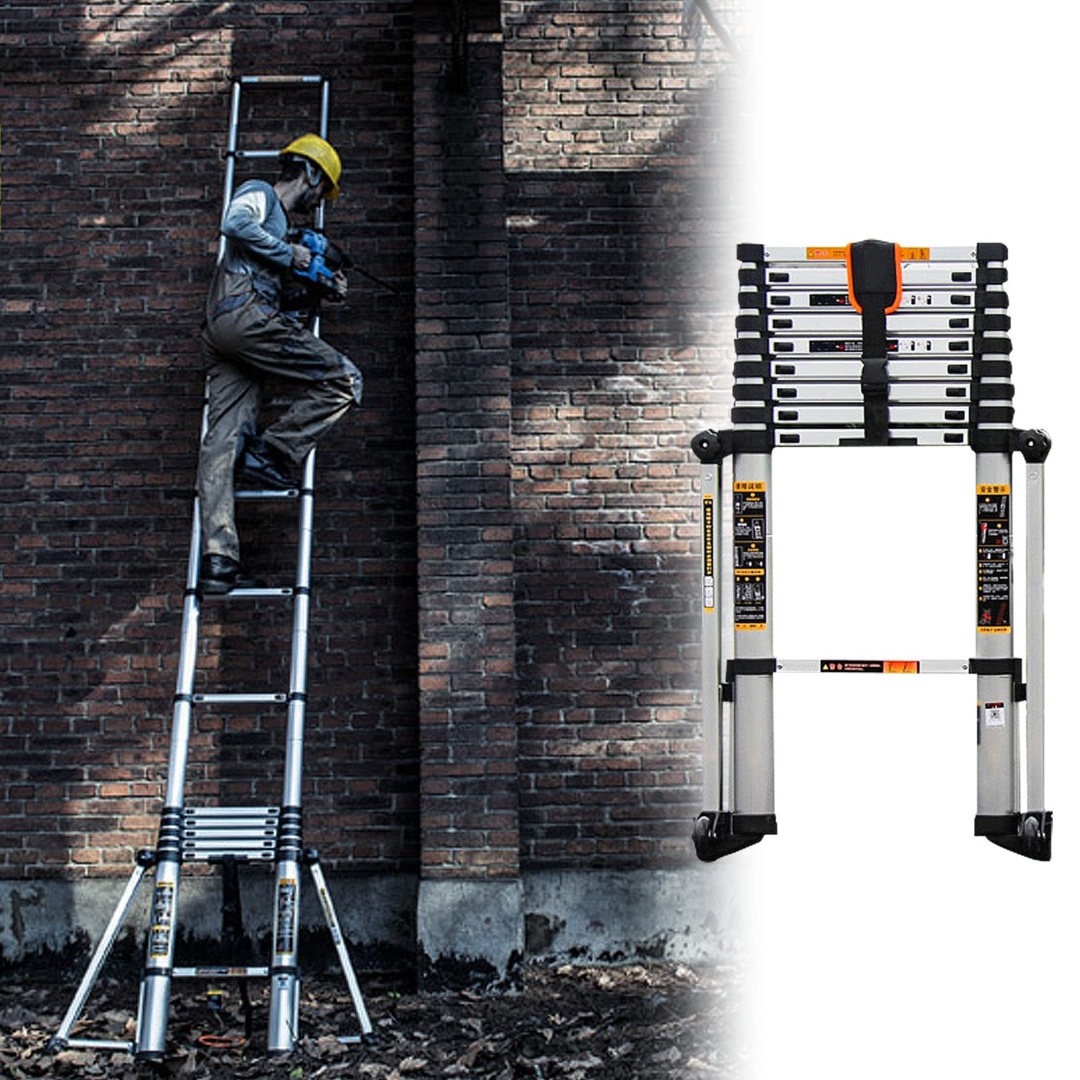
Scaffold systems often have steps and staircases as options.
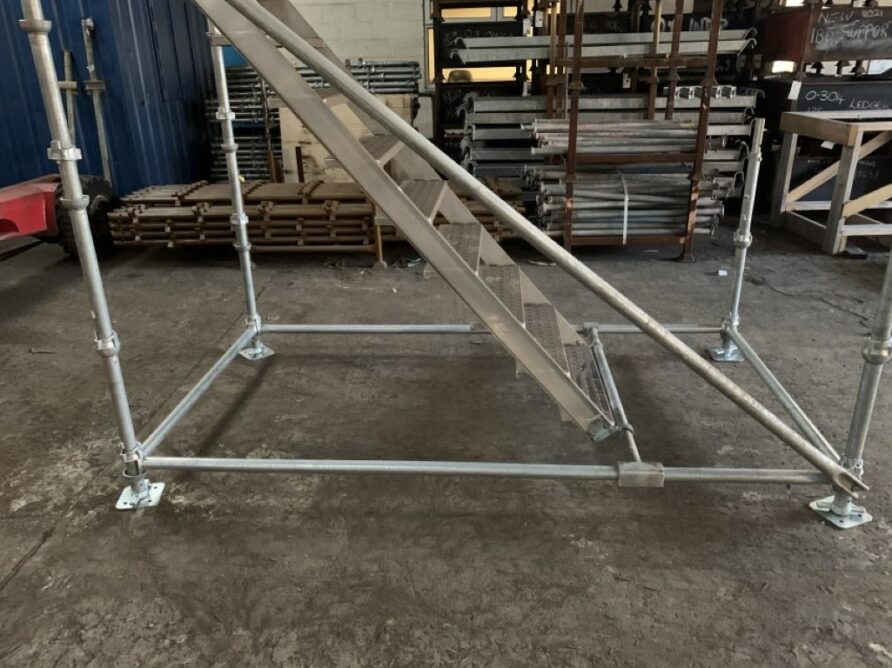
Hatches are also available as components of scaffold systems.
Other Issues
A few other issues spring to mind.
Transport and Packaging
The degree of pre-fabrication will determine transportability, but if we stay with the original MEXE idea of maximising transportability, the defining measurement is the length of the longest component
This is especially true if we want to use pallets and other common constraining dimensions, like the Container Delivery System used for air despatch.
The longest single component of the MEXE Shelter was the bay arch, at 1.73m. This exceeds the largest dimension of a pallet in any case but does stay within the 2.4m CDS limits.
8ft (2.44 m) is the longest dimension of common sheet materials like OSB, plywood and artificial alternatives, and unconnected, but relevant, plasterboard. These materials may occasionally be transported on ‘Oversized Pallets’ measuring 2.4 meters by 1.2 meters, with some overhang.
2.4m is also the width of two standard NATO pallets, and less than the approximate 2.5m width of a MAN SV load bed.
If we reduce that slightly, to 2.36m, it would fit across the short axis of an ISO shipping container, improving packing density considerably for inter theatre transport. Whilst less common, a ‘palletwide’ container increases width to 2.41m.
Products like the Hammerstone D-JMILS MIL STD 3028 JMIC or Shark Cage Alumacon Basket XXL would be suitable solutions for storage and transport but slightly less compatible for ISO container and CDS.
At 2.29m (longest dimension) the Spacesaver Rapid Readiness box would be a viable alternative because it is designed to fit with the constraints of the width of an ISO container.
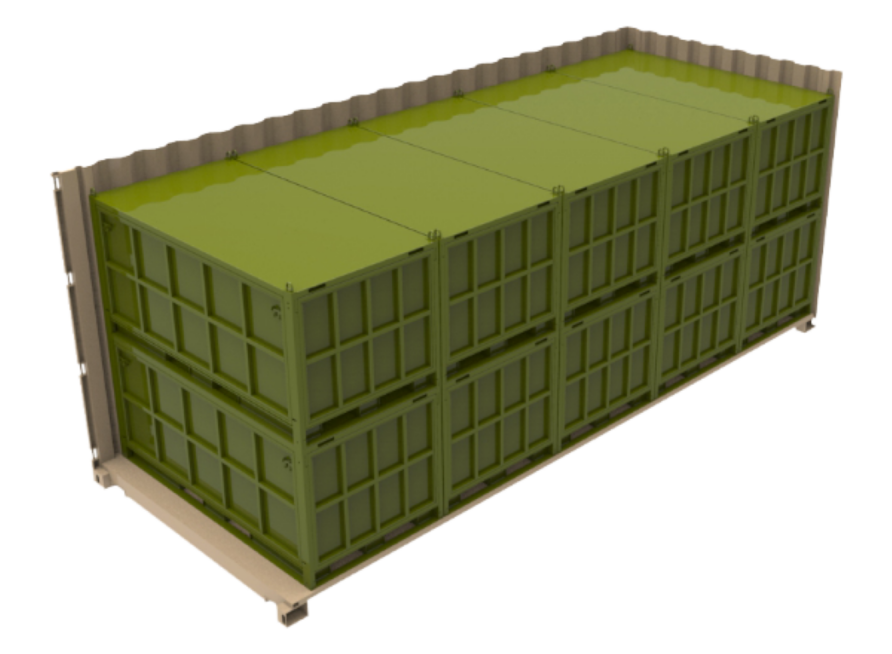
A Dollav SL2160 plastic pallet box might also be another option, at 2.16m long, and likely considerably cheaper than the Rapid Readiness Box from the USA.
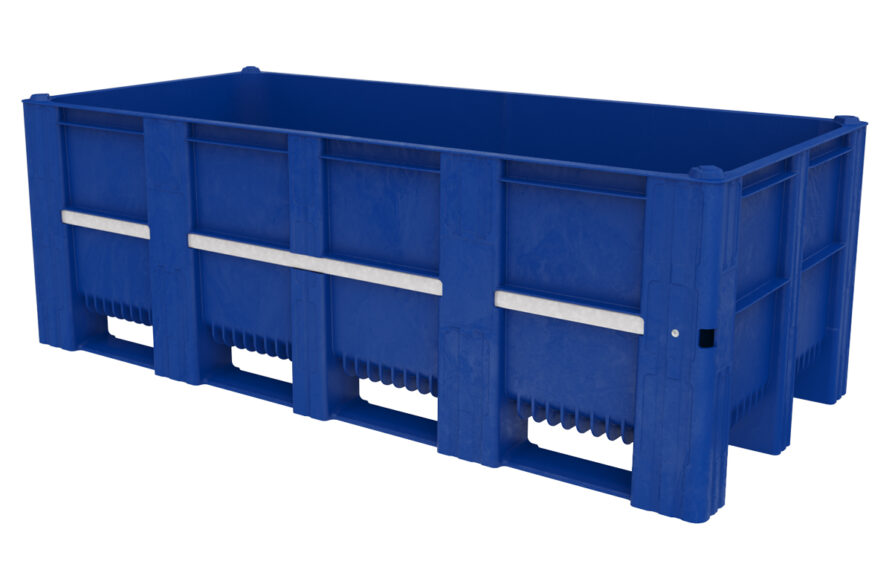
Standard 2.4m sheet materials would not fit, but as with all these discussions of dimensional compatibility, it is trading one dimension off against another.
So, less than 2.4m is probably a good constraining dimension, with either 2.29m or 2.16m being the sweet spot for transportability and affordability respectively.
2m also allows internal carriage in most small to medium-sized trailers.
1.2m would also be the ideal maximum width, again, providing compatibility with CDS and most other containers.
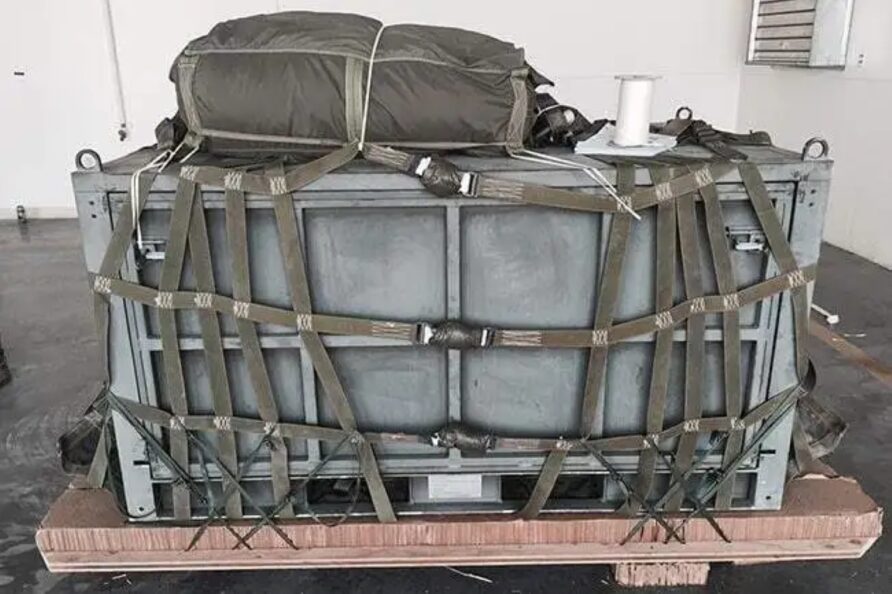
Closer to home, Lowe manufactures all manner of post and post stillages, and can produce in bespoke sizes.
Not only do they have forklift access, they can also be fitted with lifting attachments.
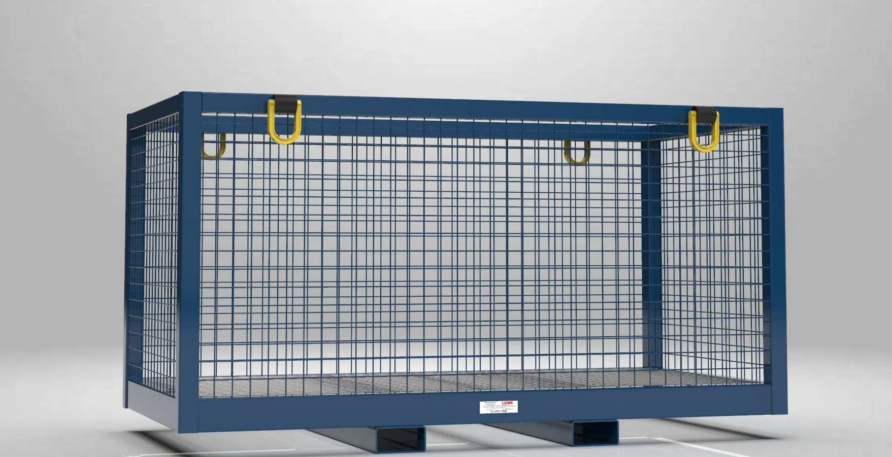
With some imagination, it is also possible to envisage a product like a post stillage with mesh infill, not only used for transport, but as a component of the shelter itself.
Perhaps an access shaft when placed end on, as a door or door frame, an internal table or sleeping platform.
The original MEXE Shelter was designed to be easy to carry by hand, and the FRM especially, when compared to Corrugated Galvanised Iron (CGI).
With no component greater than 2m long (as the requirements described above), various transportability options become more readily available.
Excavation
For the original MEXE Shelter, the actual build time was relatively short.
Each component fitted together quickly, and whilst the FRM was often problematic, the majority of time was spent on excavation and concealment.
Using a single section and a Light Wheeled Tractor, the estimated time for completion was 2.5 to 4.5 hours during the day, and 4.5 to 7.5 hours at night.
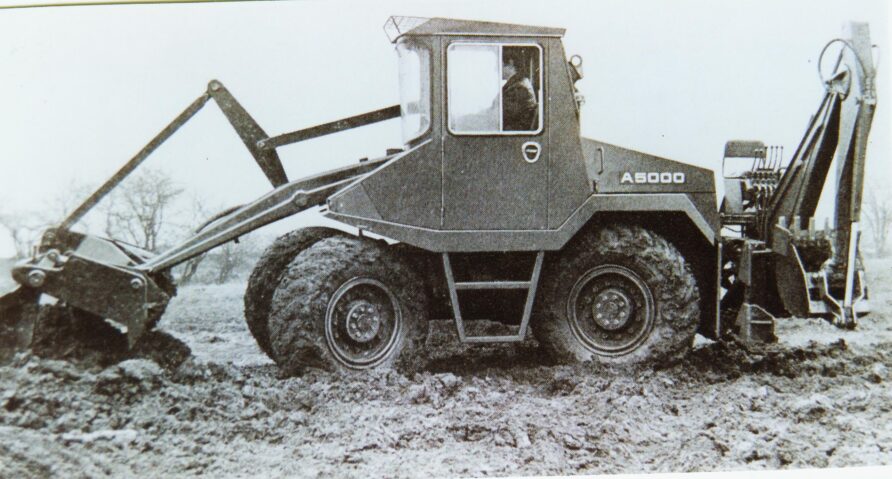
Technically, it was possible to hand dig, and was done on many occasions, but it was a poor use of resources, and whilst some might claim it was quiet, the reality was different.
The depth of excavation differed, with overhead protection ranging from 0.5m to 2.5m depending on application. The amount of spoil was significant and presented a disposal challenge.
Many of the images of the MEXE Shelter show personnel standing in the excavated void, and that void has vertical walls with no protection against collapse. This would no longer be tolerated and would likely be in contravention of relevant health and safety legislation, particularly CDM Section 22
Today, any excavation will require a protection scheme, usually involving some form of support, or battering.
Battering is a term used to describe excavating the sides to a safe angle of repose (this can also involve terracing).
This would either significantly increase the amount of spoil, or require a ‘trench shield’ or some other revetment system that would also need to be transported.
Neither of these lend themselves to hand excavation or hand carriage to site, I think a modern day MEXE shelter would depart from that concept, and rely on mechanical support from combat engineers.
Excavation could range from any of the in-service JCB, CAT, or Volvo plant.
If the user was airborne or helicopter borne, something described in this post or this, would suffice, although the depth of dig might be just shy of requirements.
Concealment and Protection
Visual concealment would be very challenging, especially with thermal, radar, and multispectral sensors now readily available. But, there are solutions that could be employed beyond careful turf removal and spoil management.
Consideration would need to be given to protection against FPVs and other small drones, using mesh and net type products at the entrance(s).
Earth as overhead protection provides excellent protection against small arms and automatic weapons, artillery fragments, and incendiary weapons. If additional protection against direct hits from artillery and mortars, or from thermobaric weapons, additional consideration will need to be given to shelter design, layout, and burial depth.
I wonder if a secondary means of escape would now be required by legislation, and confined space regulations also apply.
Environmental protection would need consideration.
Burial does provide protection against freezing, but using a candle to determine oxygen depletion, is no longer a viable solution.
Internal Systems
Sensor systems and forced ventilation would likely be needed in a modern day MEXE shelter.
In addition to these, power is an obvious requirement.
It is worth investigating the rapidly expanding professional power pack market for solutions that avoid running generators.
Ecoflow is a good example, with a range of products to cover multiple scenarios.
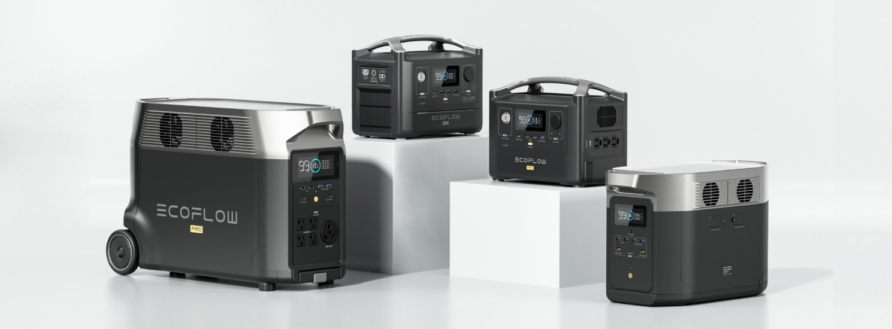
Final Thoughts
The MEXE Shelter was a brilliantly designed and executed system, but it was of its age.
Its design is over sixty years old, and I think it would be unlikely to be accepted into service today.
But that does not mean the gentlemen of MEXE had it all wrong, the layout, the concept of rigid frame and flexible revetment, ease of transportability, low cost, and simplicity, endure.
Although any new design would be subject to professional engineers oversight and testing, using modern and commercial off the shelf (COTS) products to recreate it, does not seem impossible or hugely expensive.
Whilst prefabricated shelters have many advantages (and I will look at them in a future post), the reduced transportation requirements of a ‘kit of parts’ offers many advantages as well, especially if we think about maximum dimensions and how they can be optimised for transport.
One other departure from the original concept is that of hand excavation, I just don’t think it is a sensible option now, especially if battering and deeper burial is specified.
Finally, is there even a requirement for relatively small buried shelters, I don’t know, but is this sustainable in a modern environment?
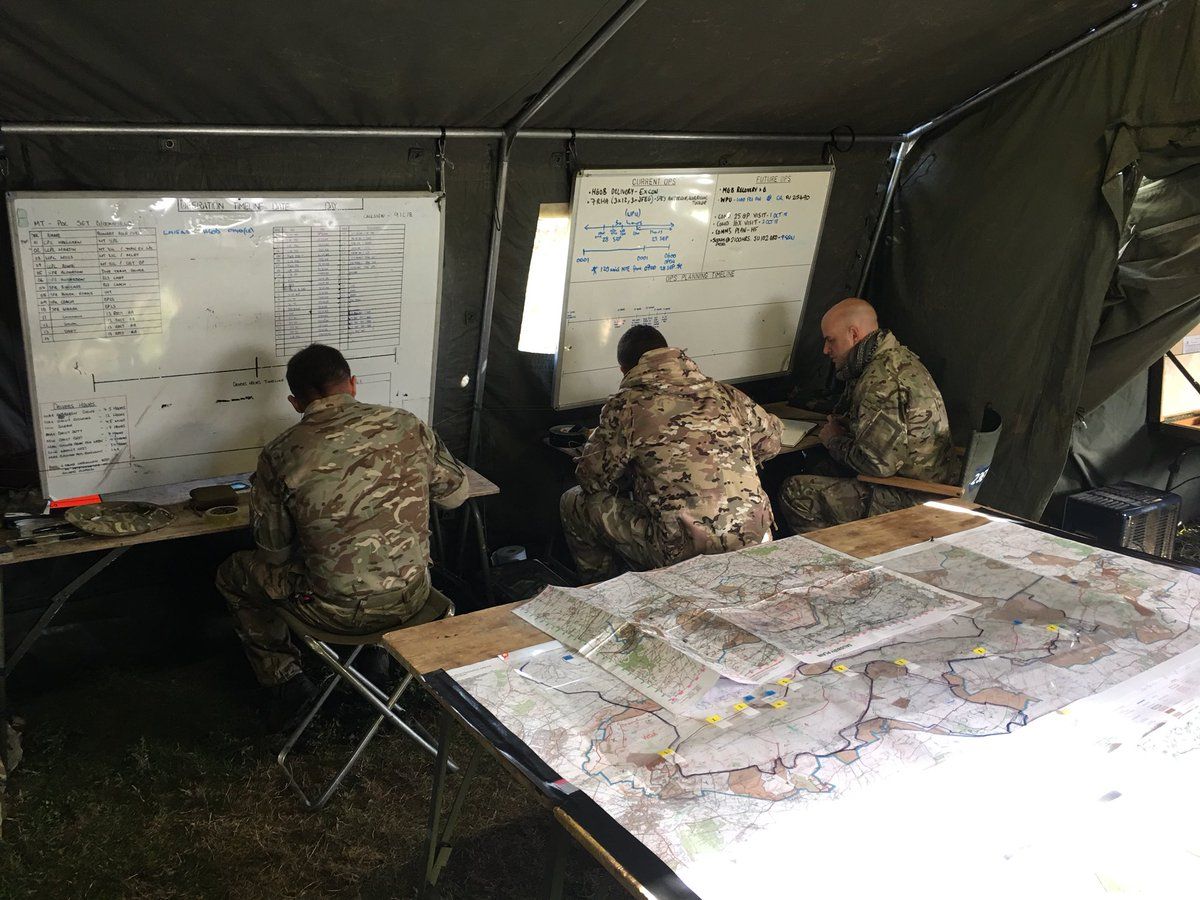
Have at it in the comments!
Think Defence is a hobby, a serious hobby, but a hobby nonetheless.
I want to avoid charging for content, but hosting fees, software subscriptions and other services add up, so to help me keep the show on the road, I ask that you support the site in any way you can. It is hugely appreciated.
Advertising
You might see Google adverts depending on where you are on the site, please click one if it interests you. I know they can be annoying, but they are the one thing that returns the most.
Make a Donation
Donations can be made at a third-party site called Ko_fi.

Think Defence Merch
Everything from a Brimstone sticker to a Bailey Bridge duvet cover, pop over to the Think Defence Merchandise Store at Red Bubble.
Some might be marked as ‘mature content’ because it is a firearm!
Affiliate Links
Amazon and the occasional product link might appear in the content, you know the drill, I get a small cut if you go on to make a purchase
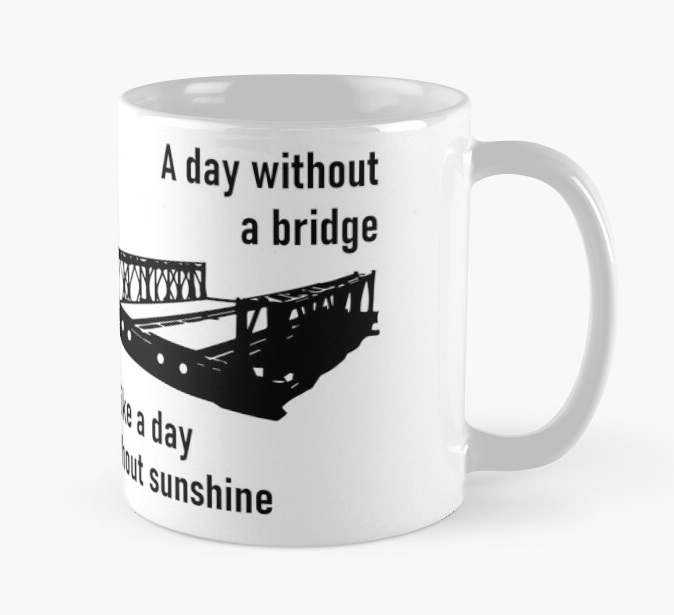
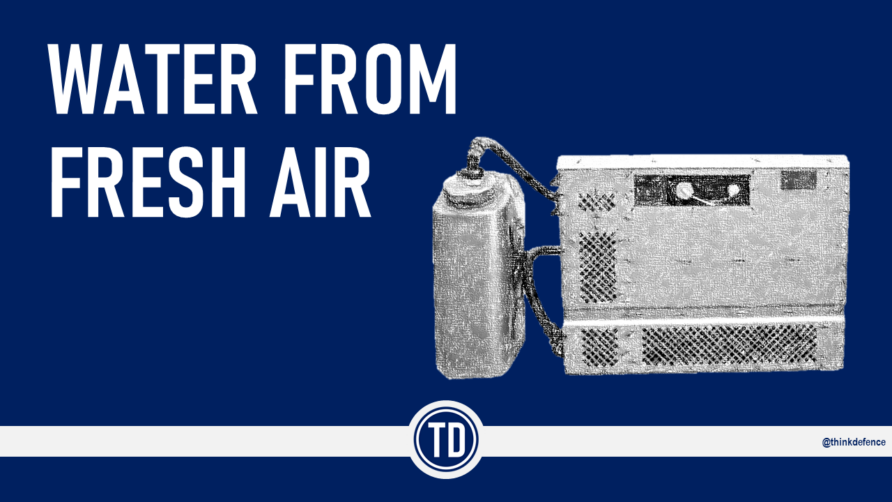
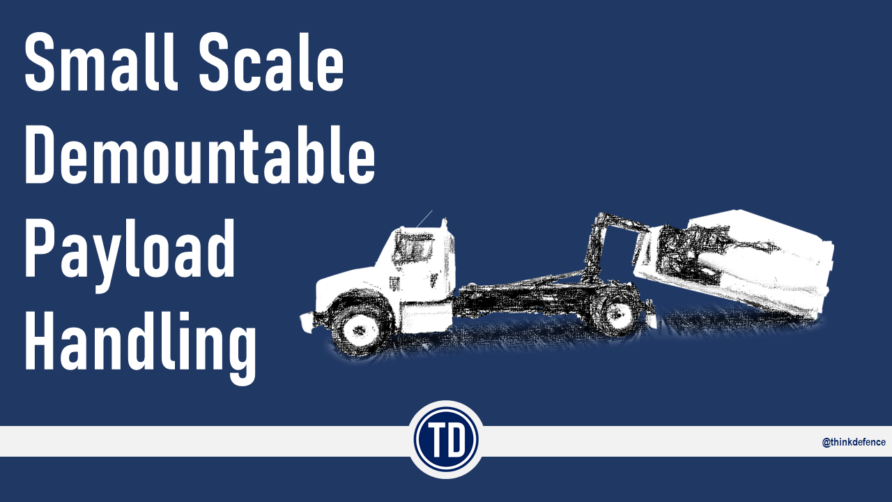
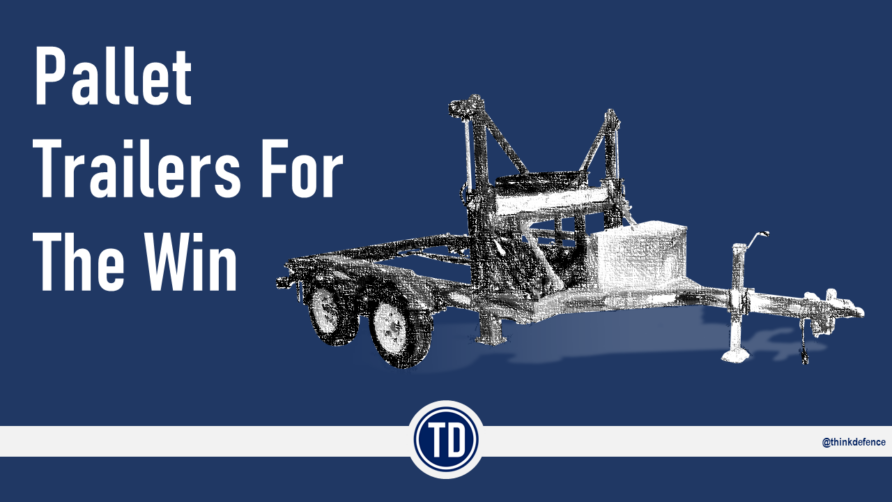
Yet another great article. The Unconventional Soldier podcast is an interesting listen.
Are equivalent shelters required? I'd say absolutely yes. The need for the capability to construct low-observable & artillery resistant field defences has been made clear in Ukraine.
The argument here is another one for standard methods & (stockpiled?) equipment.
Ukrainians have used timber – its in plentiful supply and provides insulation. The combination of DPM, HDPE or coated polypropylene and timber seems to work. In some instances I've seen, their major issue is water ingress.
How do you get mud and water out of a trench system / shallow bunker system? Slurry pumps are hefty items and generate heat, plus the resulting area of discharged mud or slurry may increase the visibility of the location. UA army very keen to receive mini-diggers, not the smallest, but the mid-size units (easily trailerable) that will work among mature trees.